Three and a half meters by two – they are large, the canvases painted in oil by Joana Villaverde, for the exhibition My pleasure, on view at Pavilhão Branco of Galerias Municipais from October 31st until February 9, 2025. Just one work, a little smaller, is not completely abstract. Vigia represents the view from the artist’s studio, located in the Monastery of São Bento, in Avis, a space provided by the City Council and where Joana founded, in 2018, her Officina Mundi, a place with doors always open. It was there that she created all the pieces she now shows in Lisbon and just by being there this exhibition was born, in which she presents, for the first time, works without any figurative or iconographic expression. “It’s because I had this space and this time that I made these paintings. There is a path that I could never have taken if I hadn’t been in Avis, in this space and in this time. Artistically, I reached a place I didn’t even know was possible,” she says. That’s why she calls My pleasure “a portrait of the privilege of being able to do things in freedom”.
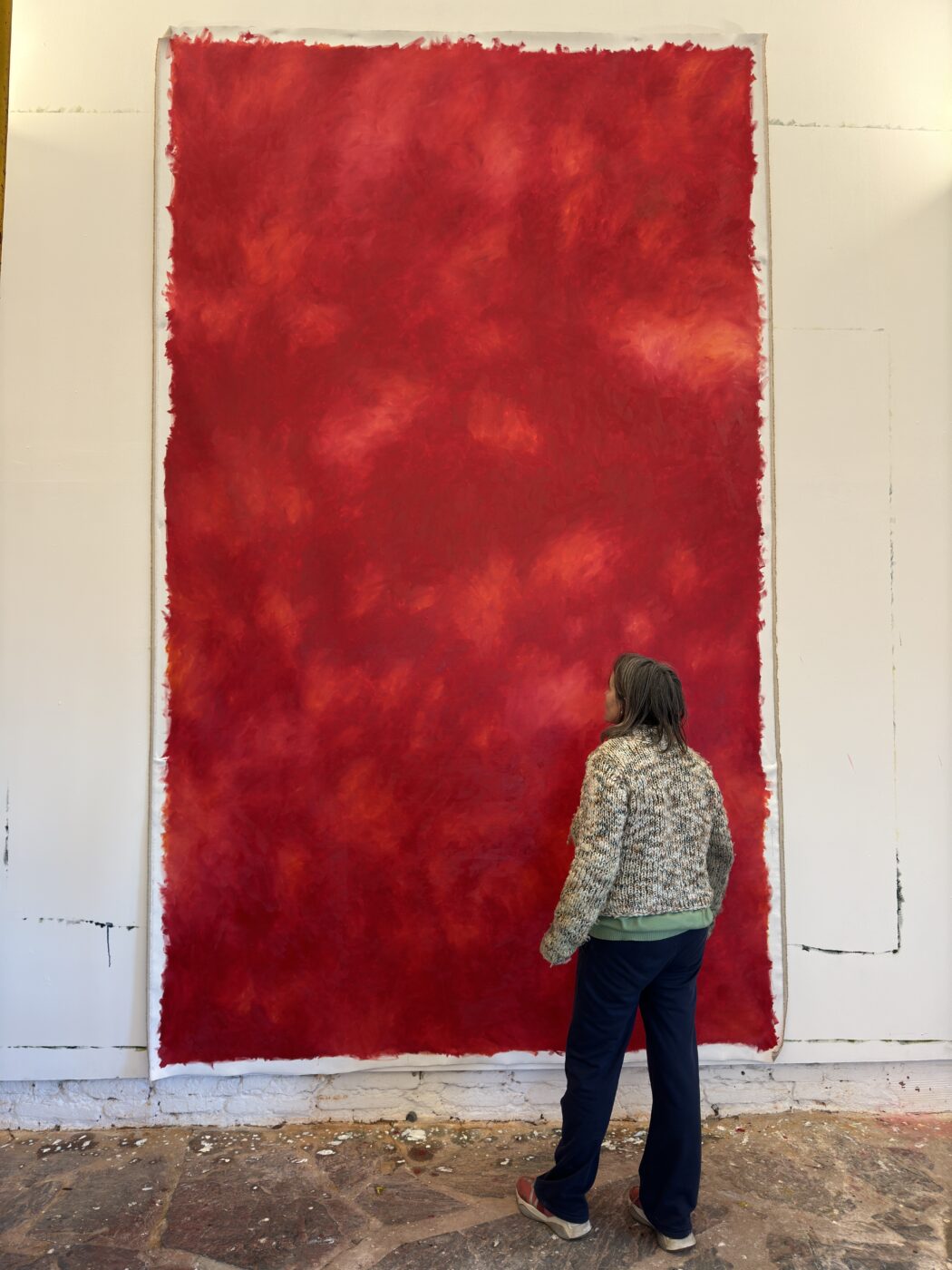
In the paintings she reflects the feeling of plenitude and infinity that comes from being able to work in such a studio, but also a desire to share and relate to the world around her, through brushstrokes made of broad and strong gestures. “As they are abstract, I was free to move in front of those canvases, it was a very important physical movement. I’m small and the canvas are very big, so I really had to use physical strength. It was like a dance or a sport”, she says. “In this process of making, I glimpse infinity. For me a new world.(…) It is the enormous ambition to fill the void with silence”, she writes on the handout sheet.
Reflections of everyday life
Looking out the studio window, she began painting skies and notes of earth at the bottom of the canvas. However, the reality of the world imposed itself and Joana Villaverde, outraged by the attacks in Gaza, ended up covering a canvas in red. “When I finished I was really grumpy. I think it was what I needed to paint, it was what I had to do in light of the ongoing massacre in Palestine, a place I have already visited three times and to which I feel very connected.” She simply called it Red.
Being in Avis, she says, ultimately brings her a greater awareness of the world around her. Far from feeling isolated, she finds that she has more time to listen and pay attention to what is happening. This is also why she created Officina Mundi and opens it to other artists and the population, organizing residencies, exhibitions and meetings frequently. “Sharing this place is essential, because it is too beautiful for just me to enjoy. I am aware of how important it would be for us all to have this right. It doesn’t belong to me, it’s public and that’s how it should be.” For the artist, it all comes down to one idea: “Being together, open, honestly and giving the best we have to each other”.
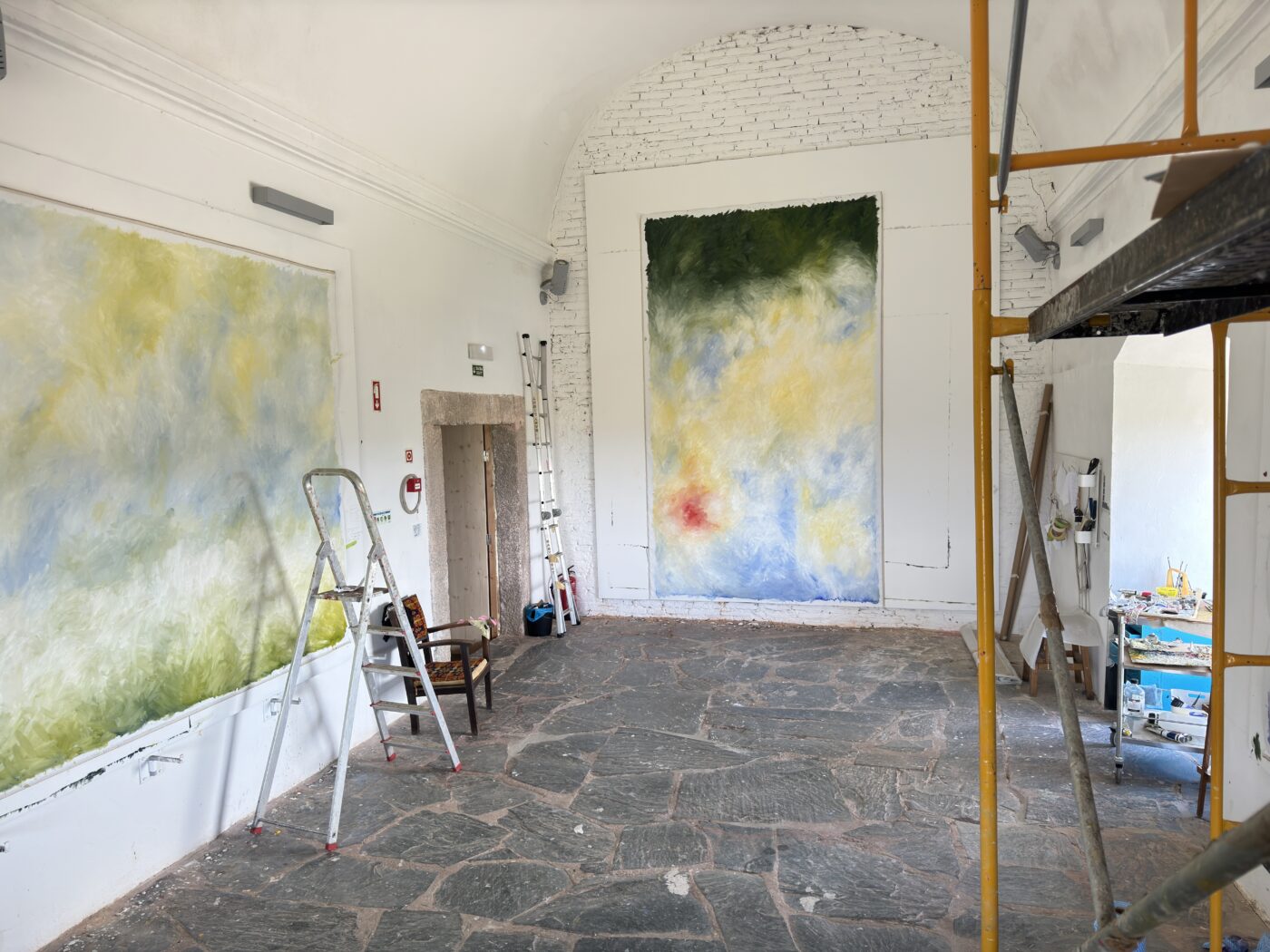
At the same time and thinking about what led her to paint Red, Joana Villaverde writes on the exhibition sheet: My pleasure turns out to be “the contradiction between freedom and asphyxiation, my freedom and the collapse of humanity”. They are perhaps reflections of her daily life, an expression she uses in this text, and works that she describes as “vertical skies” with the colors she experimented and mixed on the canvas. In one of the other paintings, horizontal, she confesses that she indulged in tones that she previously rejected: purple and lilac. She called it A cena dos violinos (The Violin Scene) because it was also an instrument she didn’t like for many years… until she was willing to listen more carefully. “I’m more calm now,” she admits.
My pleasure is curated by António Pinto Ribeiro. With free entry, it can be visited from Tuesday to Sunday, from 10 am to 1 pm and from 2 pm to 6 pm. Joana Villaverde welcomes you: “It was a pleasure, please come in.”
“Dances between life and death, death and life”, announce the current artistic directors of Alkantara Festival, Carla Nobre Sousa and David Cabecinha, in the opening text of this year’s programme. Lisbon’s historic performing arts festival, founded more than 30 years ago by Mónica Lapa as Danças na Cidade, and since 2005 under its current name, covers a dozen stages, from the institutional CCB, Culturgest, Gulbenkian and São Luiz to the alternative Casa Independente and Espaço Alkantara, passing by Biblioteca Palácio Galveias, Casa da América Latina, Teatro do Bairro Alto and an old office in Marvila, now named Winter Garden.
They arrive from South America, Europe, Africa or the Middle East, and there are more than a dozen artistic manifestations where “lives are heavy with violence, grief, and injustice”, but also the possibility of more “optimistic versions” of future. As programmers, Carla and David believe that, “when the proposals dialogue with each other within the festival, despite so many stories of tiredness and disappointment, there is a possibility for hope”.
Signed by artists originating from the Colombian Amazon, such as Waira Nina, from the inhospitable and wonderful Argentine northwest, such as Tiziano Cruz, or from Africa, such as Mamela Nyamza and her 10 performers of different ethnic origins, the festival comprises more than a dozen excellent shows, two programmes with guest curators, talks, films and “other gatherings”, including a concert dedicated to the music of Gal Costa by Àkila a.k.a Puta da Silva, on November 30, at Casa Independente, in Intendente.
Some highlights
The festival begins at Culturgest, with The Bride and Goodnight Cinderella, by Brazilian artist based in Amsterdam, Carolina Bianchi. When, in 2023, the show debuted, at the Avignon Festival, as the “first chapter” of the Cadela Força Trilogy (which will continue in 2025 and conclude the following year), the debate on gender-based violence and sexual abuse of women gained strong prominence in parallel events to the festival. In question, a disturbing, disconcerting and innovative artistic object that, starting from the story of Pippa Bacca – raped and murdered during the Bride on Tour, a performance in which the Italian artist and feminist traveled, dressed as a bride, between Milan and Jerusalem – begins by going through the history of art, in the format of a lecture where representations and true stories of women who were brutally raped and murdered are discussed.
If, in the first part of the show, discomfort due to the rawness of the narratives sets in, in the second, Bianchi directly challenges the audience to descend into the hell of sexual violence and feminicide, taking a mix of “good night Cinderella”, also known as “rape drug”, and leaving her body vulnerable at the mercy of eight performers.
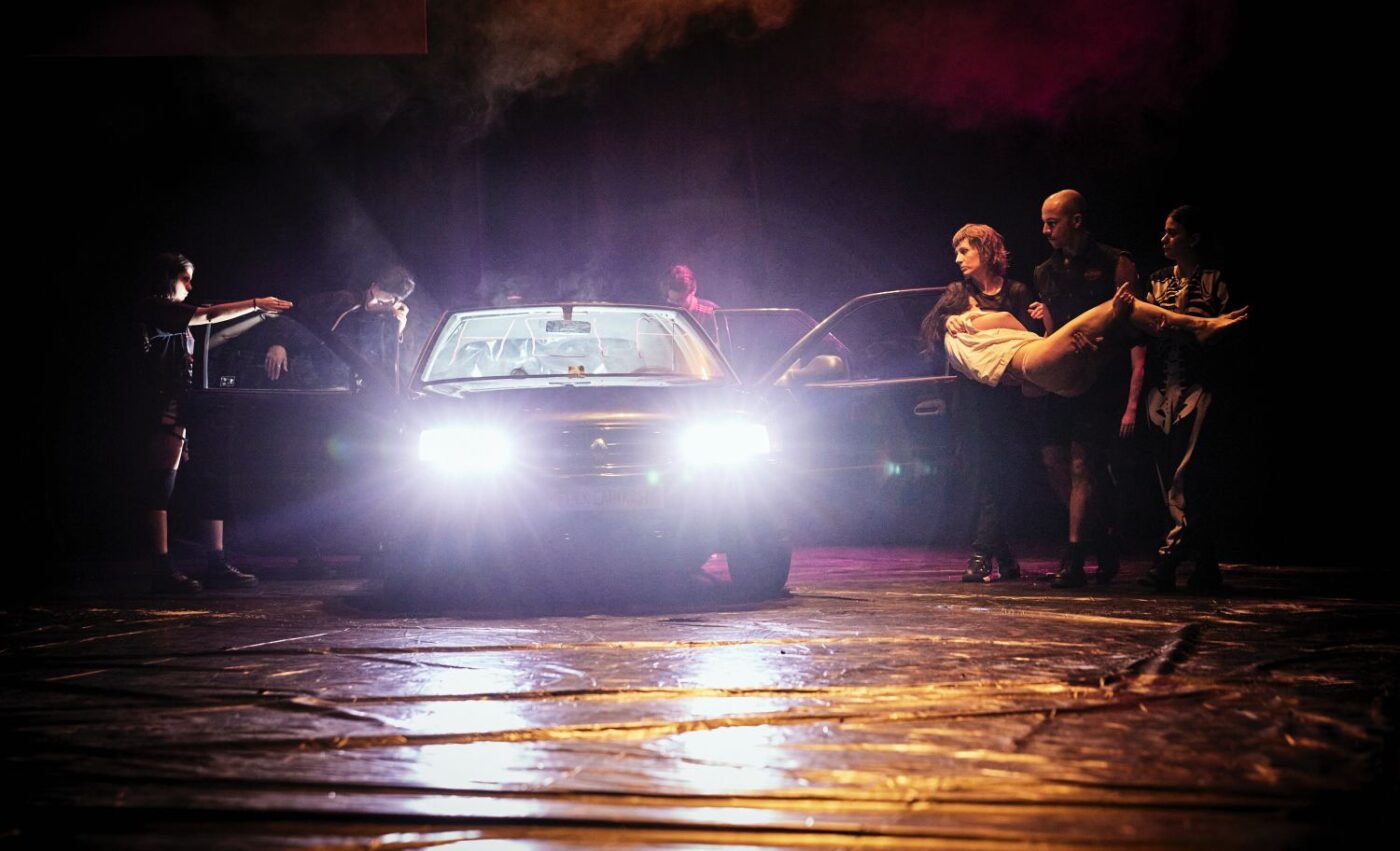
If Carolina Bianchi and her company Cara de Cavalo promise to mark this edition of the Alkantara Festival, it is with the martyred Middle East in the background that two small treasures arrive to be discovered: The body is here, off screen, by Alia Hamdan (Espaço Alkantara, 19 and 20), and Dear Laila, by Basel Zaraa (Biblioteca Palácio Galveias, from 22 to 30).
When Alia Hamdan presents this performance in Lisbon, we don’t know, but we fear that bombs will continue to fall in her hometown of Beirut and in others in her country. The body is here, off screen is not about the Israeli attacks on the Lebanese capital, but it will be impossible not to think about them when, in front of us, a woman is standing, close to her double, while a voice narrates the strange experience of a time in a coma. The deep state of unconsciousness she fell into began on August 4, 2020, when a very strong explosion in the port area “affected the city as a whole, in a single instant”. According to the author, “this performance is an attempt to portray a frozen temporality, generated by that event”, reflecting on the absence of those responsible and political consequences resulting from this event that swept wide areas of the city, killed more than two hundred people and injured thousands.
As for Basel Zaraa, he was born and raised in a Palestinian refugee camp in Syria. His grandparents were expelled from Palestine in 1948, and since then, Zaraa’s family has never received citizenship from any other country. In 2010, this musician and street artist managed to reach the United Kingdom where he settled and became the father of a girl, Laila. One day, his daughter asked where he grew up and why they couldn’t go there. Basel then decided to build a model of his childhood home in Yarmouk, near Damascus, in what became the largest Palestinian refugee camp, now practically destroyed. Dear Laila challenges us to think about how “war and exile define public and domestic spaces”, putting each of us in the shoes of Basel’s daughter, sitting in front of the model of the house, with the headphones of an old walkman, discovering “objects, photos, sounds and smells from the history” of resistance and forced migration of little Laila’s family.
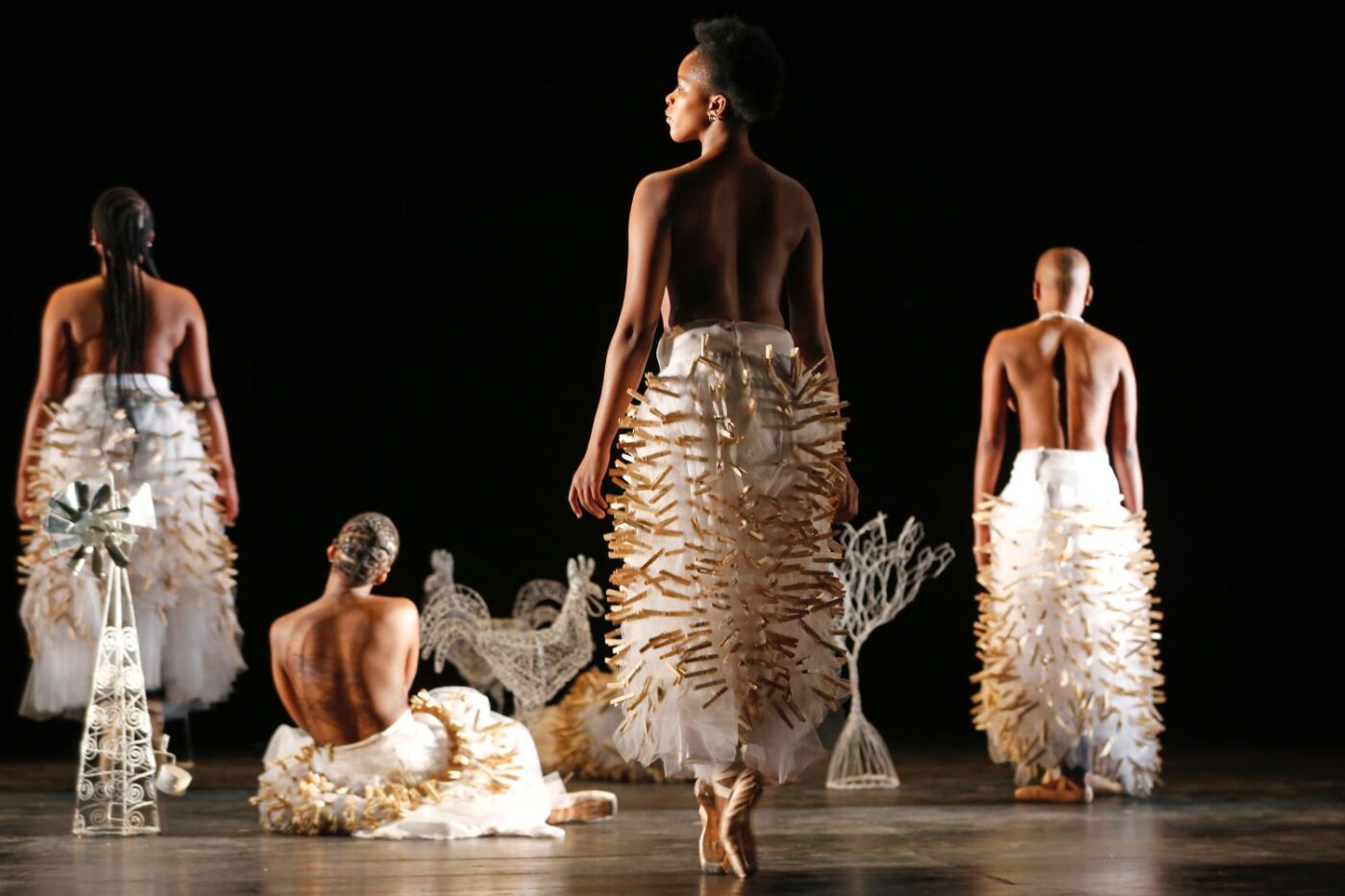
Another highlight of this edition is Nigamon/Tunai (16 and 17, at Teatro do Bairro Alto), a show born from artistic collaboration between indigenous communities in Canada and Colombia. The words that give the title to this “poetic manifesto” both mean “song” in Anishinaabemowin and Inga, respectively. The first, an indigenous language from Canada, where director, writer and actress Émilie Monnet comes from. The second, the language of a people of the same name who inhabit the Colombian Amazon, the birthplace of Waira Ninga, an interdisciplinary artist who co-signed, with her Canadian friend, a “performance piece” where the territories of both – the north and the south – intertwine in a “valuable exchange fueled by living knowledge, the cosmogonies and the struggles that unite them”. Among these struggles, the fact that, in the territory of the Inga people, oil and mining companies are destroying entire ecosystems to plunder resources. Namely, copper, a fundamental mineral for the Anishinaabe culture in Canada, where these same predatory companies thrive.
Inevitable, even more so when the issue of immigration continues to mark the media agenda, Keli Freitas’ most recent creation Go Back To Where You Came From (21 to 23, at São Luiz Teatro Municipal). In this biographical piece, the Brazilian artist shares the process of self-discovery triggered when she set out in search of the trail of her great-grandmother Virgínia, Portuguese, born in Torres Vedras. Having been in Portugal for seven years, Keli assumes her status as an immigrant to question what it means to be a citizen of a country, how to exercise citizenship rights, how to define whether a land belongs to this or that country. Flanked on stage by Ana Gigi, a friend she met in Portugal and who also has a history of migration in her genealogy, the show offers a reflection on this condition, challenging established concepts of belonging and identity.
Two guest programmes
Fire Letters, by Terra Batida platform, and Transmisson, by BRABA.plataforma, are two curatorships invited by Alkantara Festival for this edition.
At Casa da América Latina, on November 29 and 30, Terra Batida, directed by Ritó Natálio, proposes “a dialogue with contemporary indigenous thought”, through a session featuring Fire Letters, a reading-performance by Ellen Pirá Wassu, indigenous poet from the Wassu Cocal people, and Ritó Natálio, writer and performer, and the performance of indigenous Amazonian trans artist Uýra Sodoma, The interest in the Amazon is not the damn trees.
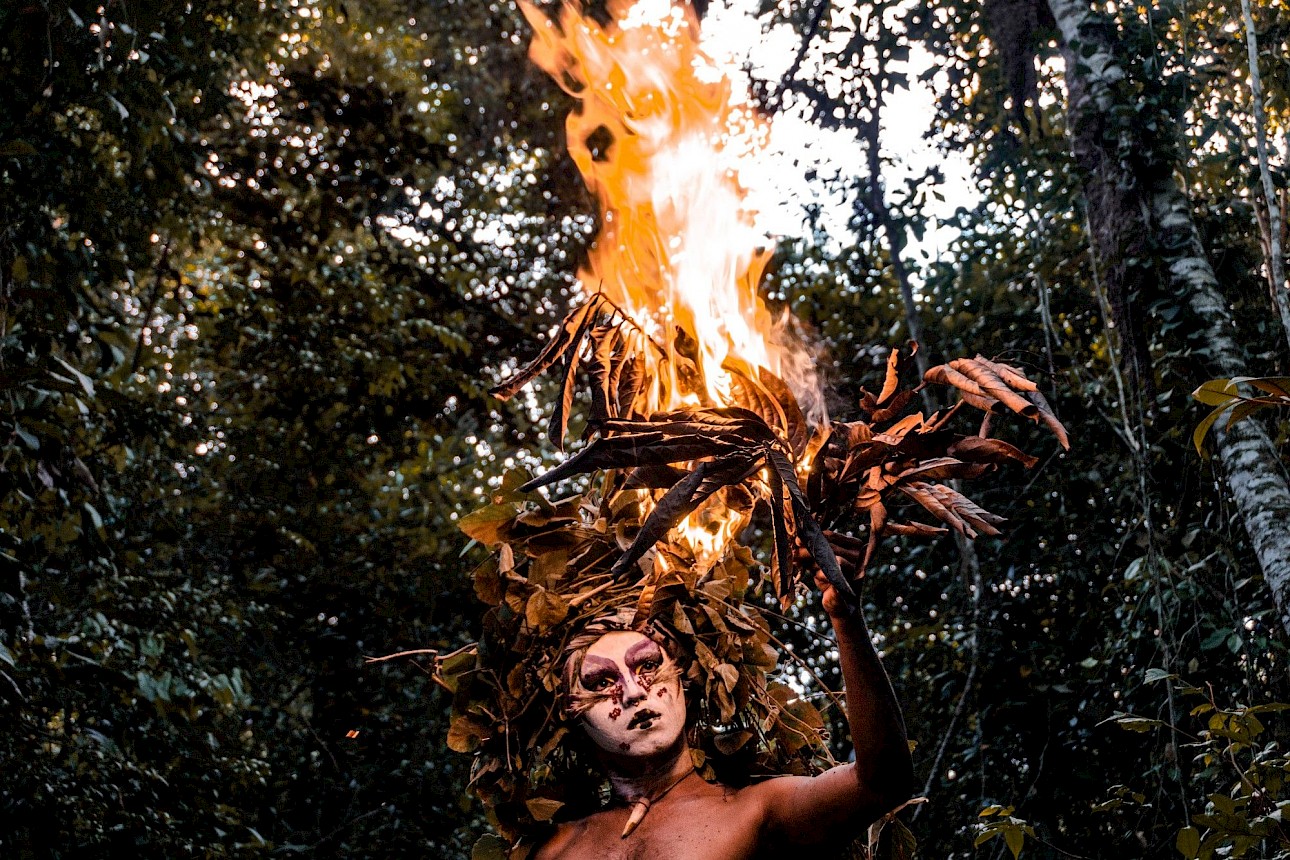
BRABA.plataforma, directed by Gaya de Medeiros, presents its third showcase, entitled Transmission, with three creations that “look at memory through very different perspectives, yet all of them draw narratives in the present that shift our perception of the identities and histories of the people we see on stage”: Brief Notes on Digestion, by dai ida, Raw Eggs, by Artemis Chrysostomidou, and the aforementioned concert by Àkila a.k.a Puta Da Silva, Da Maior Importância.
Until December 1st, there is still to see Wayqeycuna, by Tiziano Cruz, “a raw look at the art market and class privilege” (CCB, 16 and 17); Hatched Ensemble, by Mamela Nyamza, a deconstruction of classical dance, which combines ballet, African and contemporary dances (Teatro São Luiz, 16 and 17); the dinner-performance with utopias on the menu by Sonya Lindfors and Maryan Abdulkarim, We Should All Be Dreaming (CAM Gulbenkian, 23 and 24); the acclaimed The Secret Life of Old People, by Mohamed El Khatib, where a cast over 80 takes on what it’s like to experience sexual desire in old age (Culturgest, 23 and 24); 52 Blue, performance by Francisco Thiago Cavalcanti inspired by the behavior of whales (TBA, 23 to 26); and Mike, a durational performance about a day of work in an office by renowned performer Dana Michel (November 29, 30 and December 1, in Marvila). Mention also goes to the screening of the films Side Trip, by the Japanese collective Chim↑Pom from Smappa!Group, filmed in Marvila a year ago (CAM Gulbenkian, 27 and 30), and Blackface, the documentary, by Heverton Harieno about the show of the same name by Marco Mendonça (Espaço Alkantara, December 1st). Out of doors, at Casa da Dança, in Almada, dancer and choreographer Vânia Doutel Vaz opens doors to the process of creating Violetas, a show to be presented in the 2025 edition of the festival (November 30).
In short, living up to the meaning of its name, Alkantara has been “building bridges between artists and audiences, between geographies, cultures and artistic expressions” for more than three decades, and this year will be no different. Especially because, looking at the state of the world, they have never been so indispensable and urgent.
The friendly managers of four spaces in Lisbon present below some of the treasures of national gastronomy.
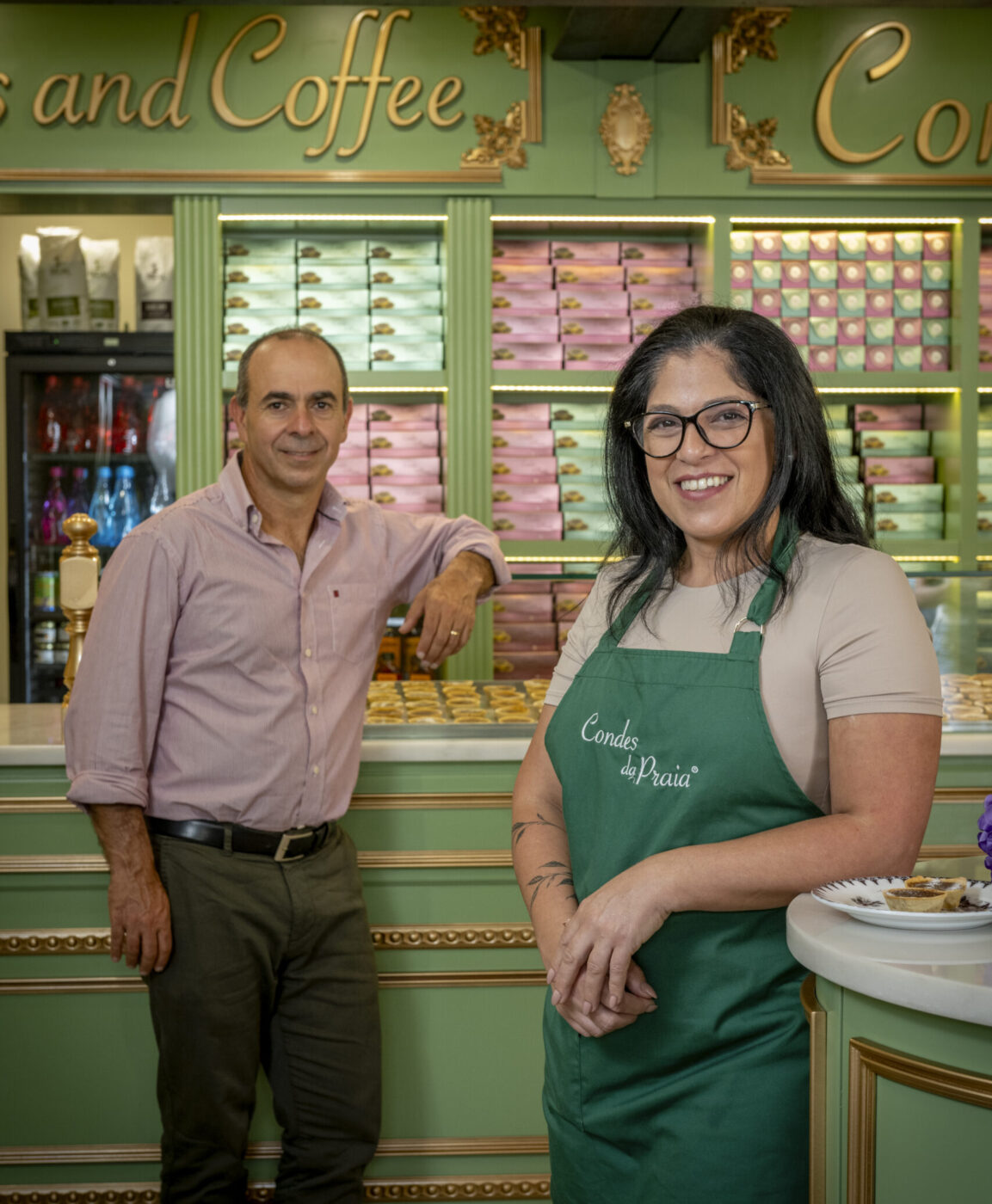
Pastelaria Condes da Praia
After joining, as partners, to the own-made bakery and confectionery, Saquinho Dourado (located in Cascais and Caxias), Fabíola Landeiro and husband António Sales Nobre wanted to invest in something different related to Azorean sweets.
They chose the lesser-known cheesecake – Conde da Praia – because it was Fabíola’s favorite and because it was linked to her birthplace (the city of Praia da Vitória, on Terceira Island). Anita Rocha, confectioner who created the original recipe, was another important ally in introducing the delicious sweet to the world.
This was the starting point for, recently, opening a new pastry shop in Lisbon managed by Paula Mousinho and which is the only space in the capital that sells queijadas and where you can also find other traditional Azorean products such as bolos lêvedos (sweet bread) or Abelhinha liqueurs, made with honey-based wine brandy.
Largo da Graça, 98
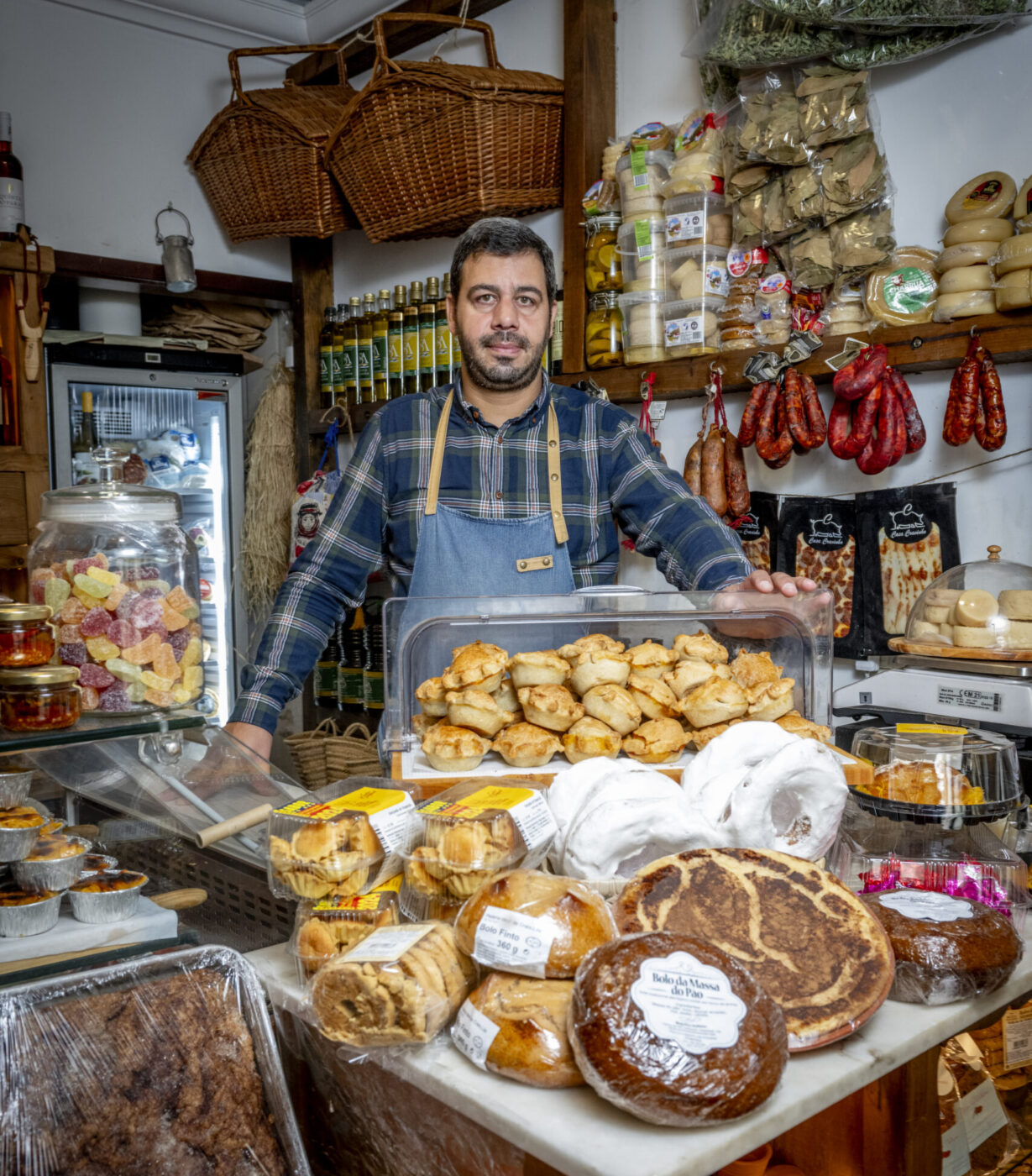
Mercearia Alentejano do Bairro
The best of Alentejo can be found in the Benfica neighborhood, in a grocery store that has existed for several years and was owned by an Alentejo native. In 2021, when the former owner wanted to leave the establishment, Edgar Marim, also from Alentejo, born in Mina de São Domingos, decided to take over the business and invest in an old dream: selling products from his homeland.
The clientele is very varied, there are even those who come specifically from Barreiro to buy products that they no longer find not even in Alentejo. In this small but very welcoming space, the difficult part is choosing between the many specialties: Alentejo pies, torresmos do rissol, bread dough cakes, costas de torresmos, Gila bolêma, sericaia, cheeses, homemade jams, sausages, wines and bread , which arrives every day from different parts of Alentejo.
Estrada de Benfica, 522B | T.933 836 478
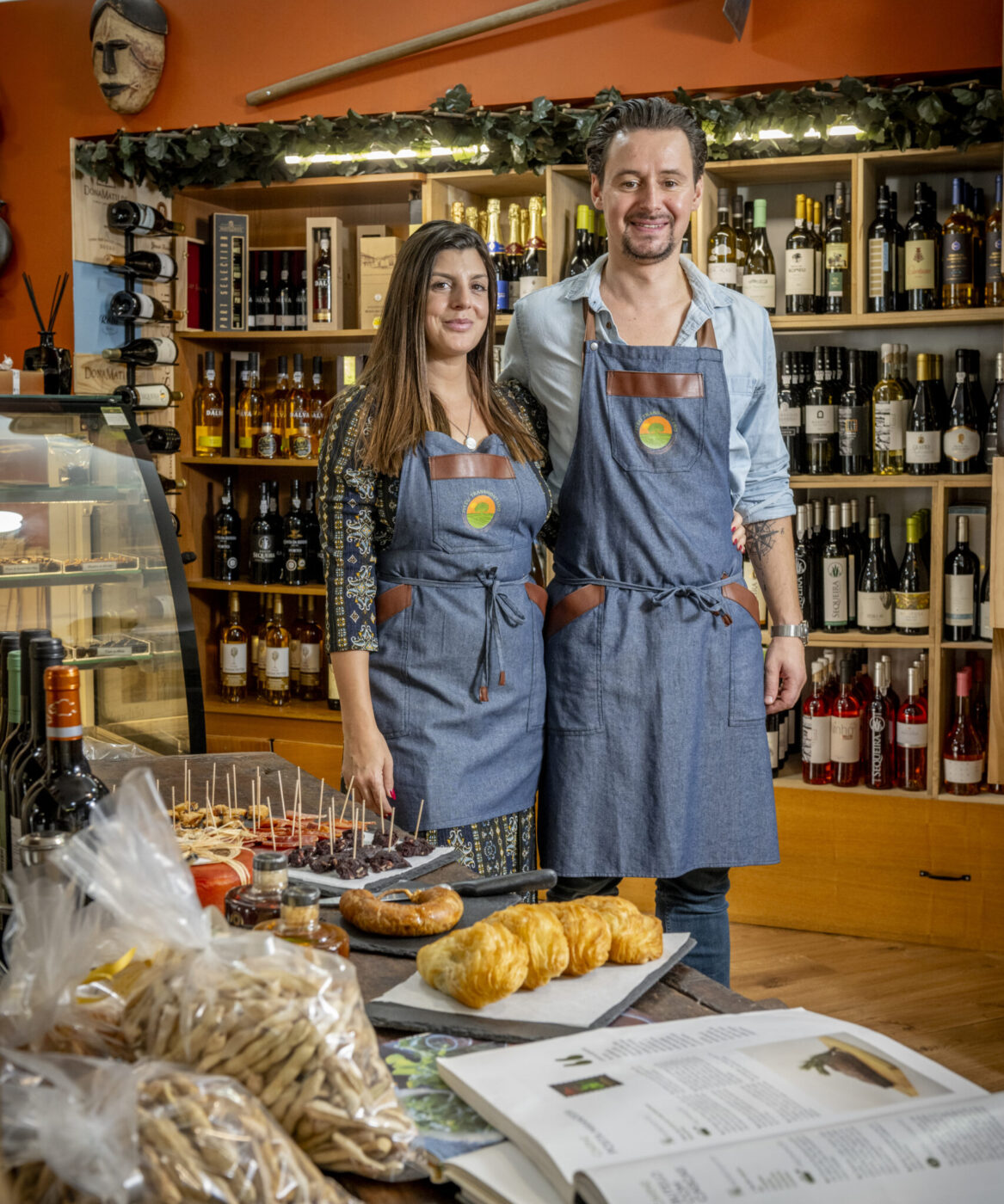
Charcutaria Pitéu Transmontano
Situated in a busy area, this traditional delicatessen, specializing in cured meats and sausages made with local ingredients and centuries-old artisanal methods, has been around for over a decade. Sara Lopes and her boyfriend João Martinho are, however, the most recent owners of the space that belonged to a cousin.
Sara has family roots in the Trás-os-Montes village of Macedo de Cavaleiros and João has always been linked to agriculture. This fact, combined with the desire to help small producers and the region of Trás-os-Montes and Alto Douro, led them to invest in the project.
Of the many delicacies on sale, smoked products stand out – alheiras, butelos, sour and hams from Mirandela, Vinhais and the Barroso Region -, meat from Mirandesa, pastries from Chaves, covilhetes from Vila Real, shells or chasubles and also bread, olive oil, wine, cheese, chestnuts and Trás-os-Montes sour cherry and cherry liqueurs.
Largo Dona Estefânia 6A | T.910 947 215
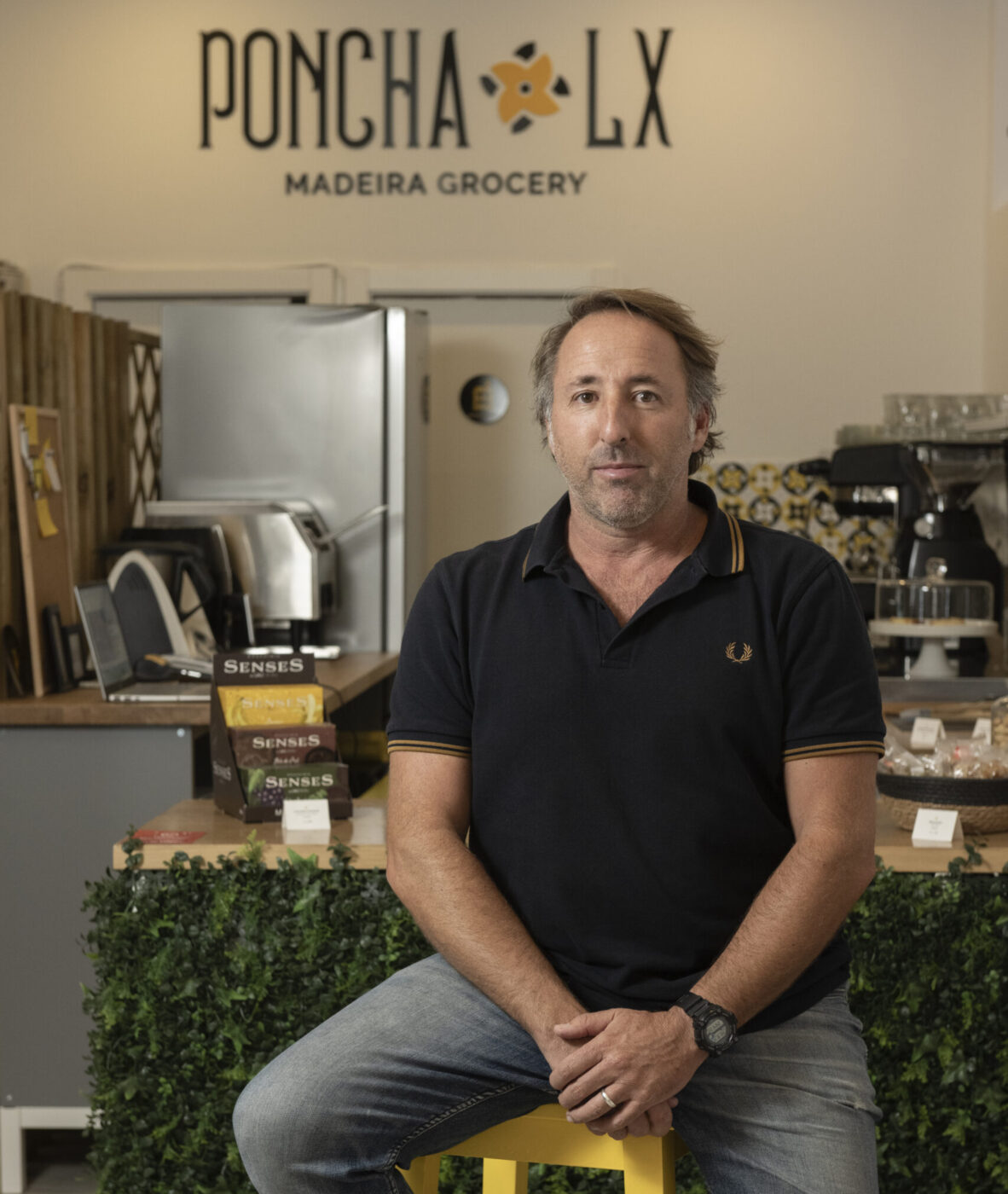
Mercearia Poncha LX
After many trips to Madeira, Tiago Milheiro and Ricardo Costa, long-time friends, decided to bring the best Madeiran delicacies to Lisbon. The recent space, open since May this year, offers a selection of traditional sweets, such as honey and butter broas, paciências, beer sticks, different varieties of honey, anise candies, the iconic honey cake, tasty cheesecakes and , of course, Madeira wine and poncha.
When manager Joana Pires joined the team, the menu was enriched with “dentinhos”, free snacks that accompany drinks: seasoned lupins and peanuts, spicy sausage, bean salad or seasoned cheese. There are also pregos of beef and fresh tuna with onion and Madeira wine and Nikitas, a refreshing drink that combines ice cream with passion fruit or pineapple.
Here, all products originate from the “island of flowers”, from bottled water to soft drinks, even Coral beer.
Largo do Terreiro do Trigo, 12 | T.968 440 474
Under the aegis of two of the most notable Venetian painters of the 18th century, Canaletto (1697-1768) and Francesco Guardi (1712-1793), the Calouste Gulbenkian Museum once again collaborates with the Museo Thyssen-Bornemisza, more than a decade later of the exhibition dedicated to the French painter Henri Fantin-Latour. In Splendour in Venice. From Canaletto to Guardi, more than fifty works from the two institutions are brought together, highlighting painting and engraving, but also books (Venice was the largest producer of luxury books in the world), textiles, a sculpture by Antonio Corradini (1688–1752) and a notable model of the Bucentaur, the doge’s ostentatious ceremonial vessel that appears represented in countless paintings of the time, as can be seen, in particular, in a superb Canaletto present here.
Having as its main focus the much-celebrated vedute, that is, the panoramic views of what, in the words of curator Luísa Sampaio, is perhaps “the most wonderful architectural ensemble in the world”, the exhibition gives particular focus to representations of festivities, namely the celebrations related to the Ascension, closely linked to the union of the city and the sea, and to the always very curious capricci, “fantasy architectures imagined by artists”.
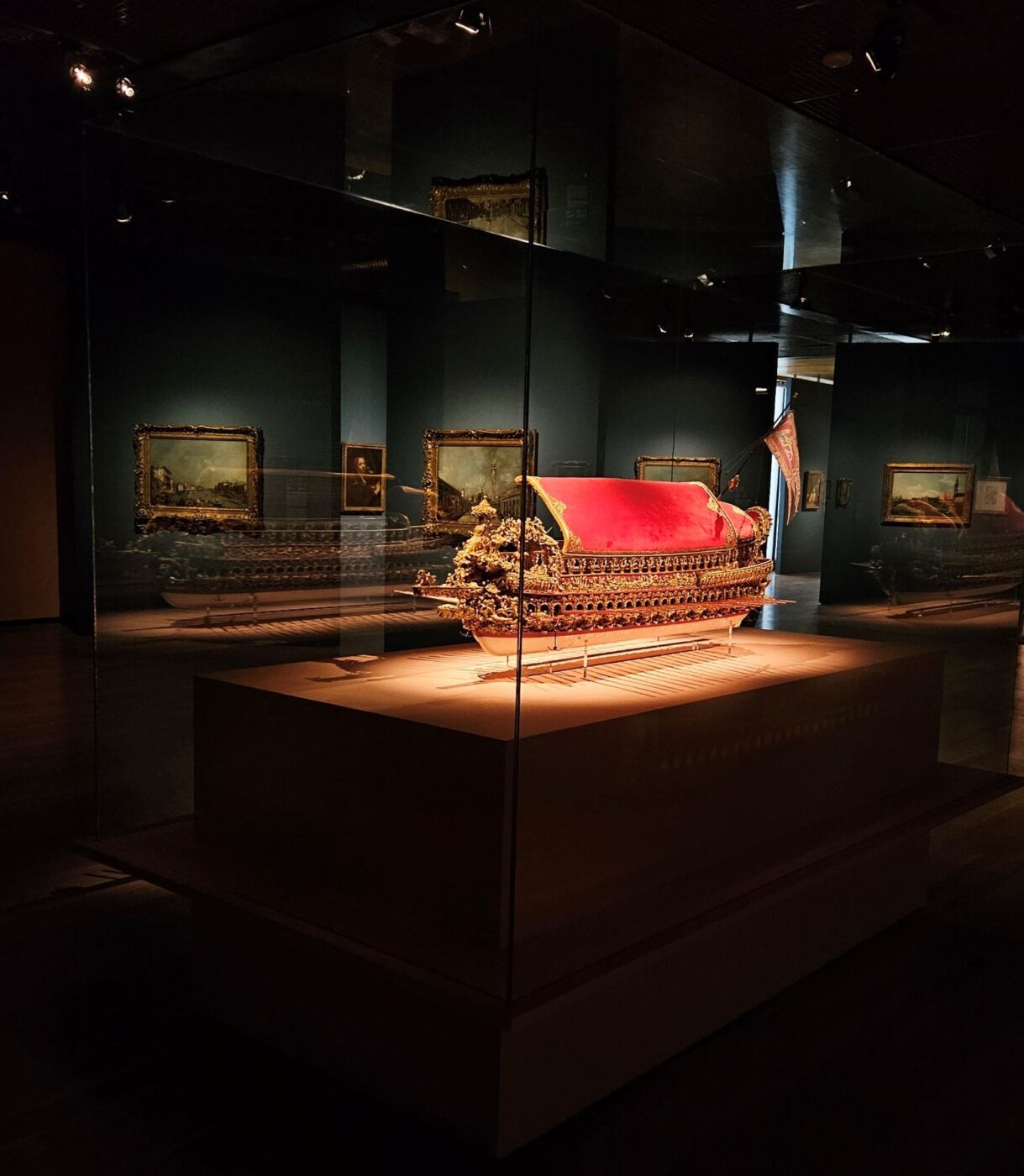
Throughout the exhibition route, it is memorable to rediscover the unique capacity of Guardi’s painting to capture the atmosphere of the Serenissima (a certain intimacy, or even “a trace of melancholy”, as António Filipe Pimentel, director of the Gulbenkian Museum, observes) through a precious set of works acquired by Calouste Gulbenkian (19 in total, making the Lisbon museum the possessor of the largest collection of the artist’s paintings). Three of them stand out in particular, recently restored and recognized as the collectors’ favorites: The Feast of the Ascension in St. Mark’s Square, Regatta on the Grand Canal and As Comportas de Dolo.
In contrast to the gaze of Guardi, the last of the vedutiste, an earlier master had asserted the painting of views in 18th-century Venice. Through geometric rigor and form, the painting of Giovanni Antonio Canal, known as Canaletto, is there to reveal Venice in all its splendor. From the Madrid museum, which holds one of the most important sets of works by Venetian artists from the 18th-century, come the imposing St. Mark’s Square in Venice, The Grand Canal Seen from San Vio and The Bucentaur, or smaller but equally relevant paintings, such as The School of San Marco and Capriccio with Colonnade in the interior of a Palace. A common characteristic of all these paintings is the almost theatrical look that the artist gives to the “scenes”, whether or not Canaletto had trained with his father, the set designer Bernardo Canal.
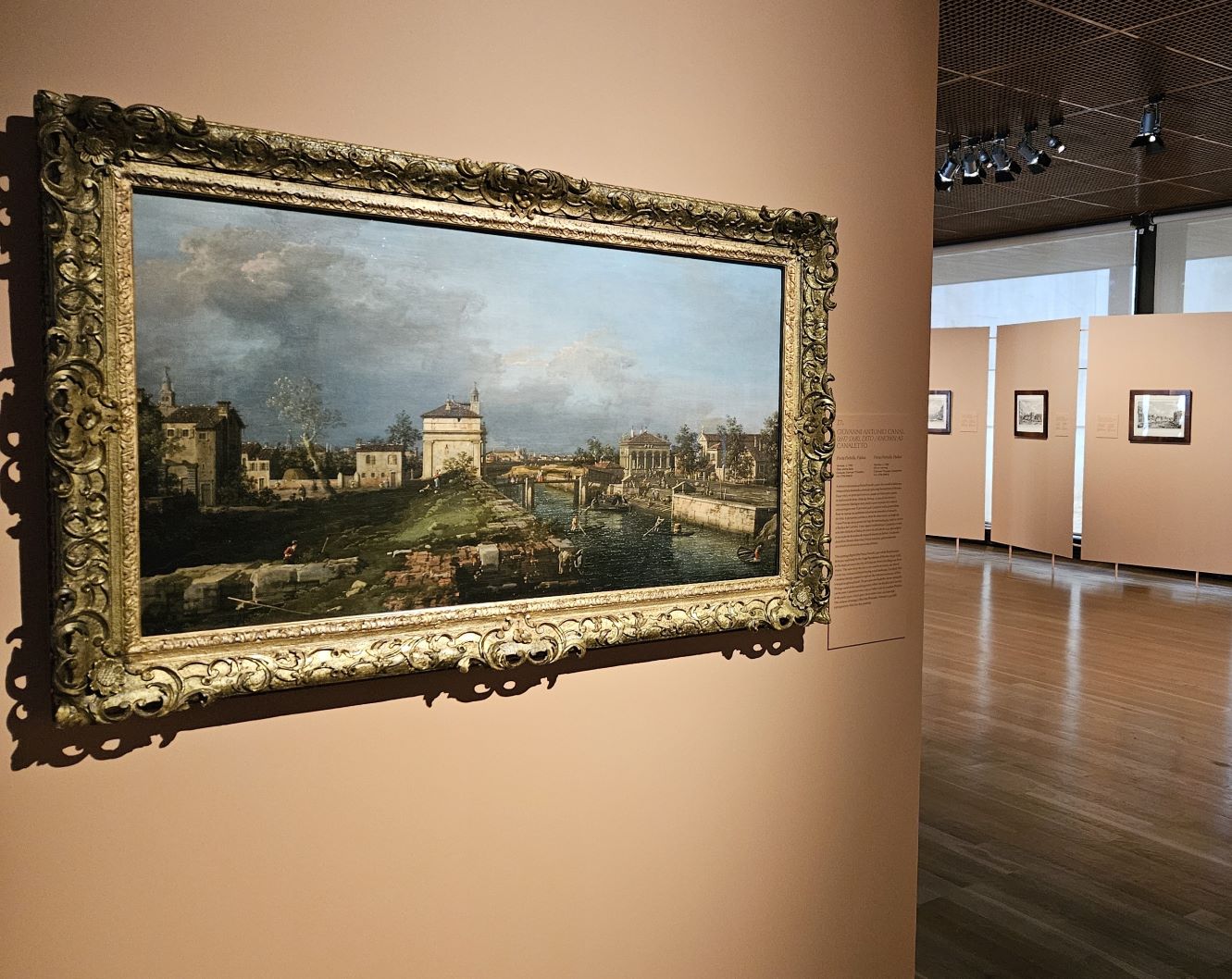
In addition to the Canalettos, the collection of the Museo Thyssen-Bornemisza also includes paintings by other masters of that period, such as Michele Marieschi, Bellotto (the landscape imagined in Capriccio with a River and a Bridge), Piazzetta (with two Venetian portraits), Pietro Longhi (a prodigious scene of everyday palace life in The Tickle) and a “quick brushstroke” Tiepolo (The Death of Sophonisba), where the artist deliberately quotes Veronese’s The marriage at Cana, as observed by Luísa Sampaio. Affirming the affinity that Calouste Gulbenkian had for the pictorial representations of Venice and his “transversal taste” on the subject, the exhibition includes, to conclude, three paintings from the 19th and early 20th centuries. Also noteworthy is a set of twelve engravings by Antonio Visentini according to Canaletto, belonging to the collections of the Musei Civici di Venezia, which help to understand the popularity (and commercial interest) that vedute had throughout the 18th century among visitors who understood them, like illustrated postcards of the once called “queen of the Adriatic”.
An almost immersive Venice
Although it is not, far from it, an immersive exhibition – especially because, as Luísa Sampaio points out, there is nothing like having “real works of art” present – Splendour in Venice offers the visitor the true “Venetian environment” through the reproduction of the sounds of the city , captured in situ, notably the bells of the city’s towers and churches and the water in the canals.
As a complement, the exhibition debuts at the Calouste Gulbenkian Museum a new digital mediation resource assisted by artificial intelligence. Through the Venez.I.A. chatbot, visitors can access via smartphone a range of detailed information about the works on display and curiosities about the history of an ancient city.
Over the next few months, there will be a parallel program that includes guided tours and workshops, as well as two chamber music concerts. The first takes place on November 2nd, with Ensemble Alorna presenting pieces by Venetians Vivaldi, Albinioni, Galuppi and Plati.
On view until January 13th, this wonderful “tour of little Venice” now installed at Gulbenkian, will continue, in the first months of next year, to the Museo Thyssen-Bornemisza in Madrid.
At first there is only silence. The interpreters enter and look at the spectators in the audience. Back, they receive the public’s gaze. It is from this relationship that Noise is made, the show by Sofia Dias and Vítor Roriz, which is on Culturgest between this thursday, 10, and Saturday, October 12. It is no coincidence that there is no sound in these first minutes – even if the title reminds us of exactly the opposite. “I like the idea of causing this initial shock, I believe it gives more space for those watching to accept, to be in the present”, notes Vítor. “Yes, from this present, we enter fiction and give way to an imaginary together. This show also ends up being an ode to the place of Theatre, where many fictions fit and where many gestures and movements fit, where there is mystery, and where we don’t know what we are going to find, but where we go anyway, because we need to go and be, because we need to unfold”, adds Sofia.
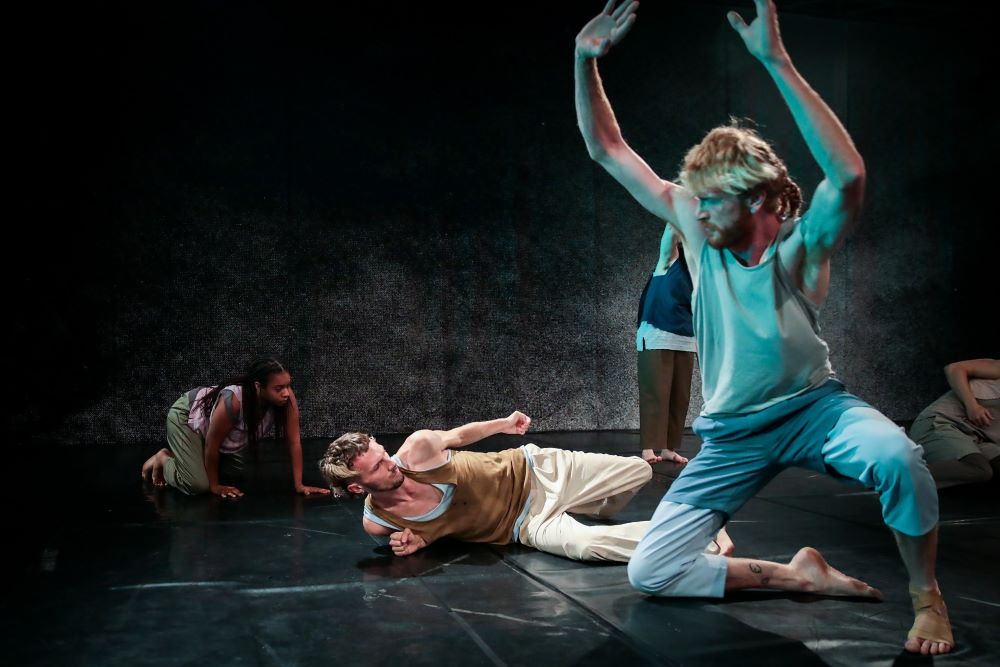
The first words are spoken in English: “What do you see?” The translation comes in the form of some subtitles written on small pieces of paper and placed by hand, one by one, on an overhead projector. “What do you see?”, “A body?”… The dancers describe their gestures and offer several reading possibilities. “How many words can fit in one gesture?” asks Sofia, remembering that a movement does not need to have just one meaning and that audiences less accustomed to dance feel embarrassed by the obligation to explain what they see. “How do we break this, how do we invite and welcome the multiplicity of perception of a movement?” On stage, the dancers strip themselves of virtuosity, complicated movements and layers and assume the presence of their bodies and their weaknesses in front of an audience. “It’s nice to be in a place and not know,” will be heard later during the show. Before that, the attention has turned to the audience, the “abstract and diffuse mass” has revealed itself in faces, dreams, expressions, gestures, desires, and the spectators were invited to – metaphorically – go up to the stage. “It’s a feeling of belonging, that they could also be here on scene, an invitation to imagination, to think about how we live in the present and how we are going to fill it. This happens in all our shows, but here it’s a topic”, says Vitor. “Those bodies summon humanity, it’s a call to empathy”, summarizes Sofia.
The extra power of dance
What’s noisy about this show, then? The title, they explain, came about halfway through the creation process, which was accompanied by scientists from the Champalimaud Foundation’s Center for the Unknown, where the duo has been in artistic residency since 2023 and until the end of this year. “The show didn’t come from these meetings, but we had a lot of conversations, they attended rehearsals and many of the ideas we ended up developing came from these discussions”, says Vítor. “Seeing their reactions reminds us again that dance is an extraordinary thing, in which we can put so much into a movement, and that dancers have so many skills that we no longer pay attention: the way they occupy space, synchronization, listening to others, improvisation… It’s almost an extra power, there’s something very special about dancing and, on stage, we are on a more poetic and freer side than in scientific research”, says Sofia.
The dialogue with neuroscience made them realize that noise is essential to existence and learning. “We need the noise to access the signal. To nullify the noise is to nullify our ability to understand”, highlights Sofia. It all depends, then, on where we turn our attention, because there is much that is peripheral that is, after all, essential. The squeaking of the chairs in the audience, the noise of the door opening and closing, the shoes on the carpet on the living room floor, the presence of the other person right there next to us – isn’t there, after all, so much beauty in noise?
Almost a hundred years ago, on July 8, 1926, a new venue opened in Parque Mayer, becoming, with Teatro Maria Vitória, the second performance building in the venue located behind the Lima Mayer Palace (currently the Consulate of Spain in Lisbon). Variedades, designed by architect José Urbano de Castro, opened its doors with the revue Pó de Arroz, starring the very “popular” Carlos Leal, the “gentle divette” Annita Salambô and the then young actor and screenwriter Vasco Santana.
The current building is a far cry from what it would have been at the time, as between 1934 and 1940 it underwent a series of improvement and expansion works, the most decisive of which were the replacement of the wooden roof with a metal one and the creation of a large counter. Until 1966, when it suffered a fire that destroyed the stage box, Variedades was expanded and even modernized, asserting itself, together with the other theaters in Parque Mayer (Maria Matos, Capitólio and ABC), as one of the main comedy and revue stages.
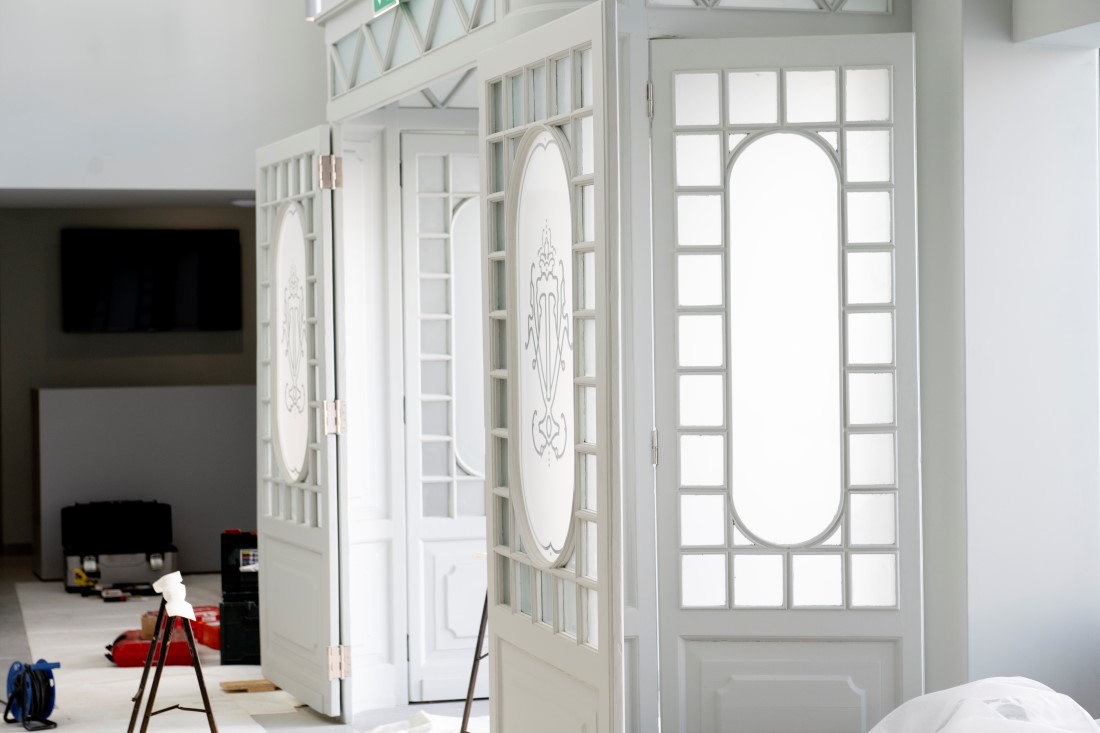
Although in the early 1990s there was a new architectural intervention, especially at the stage level, in order to adapt it to the needs of television (Filipe La Féria recorded the Grande Noite there for RTP television), the decline of Parque Mayer and the loss of popularity of revue theater dictated the closure of Variedades and its deactivation.
Already in this century, the desire to return Parque Mayer to the city (where in an act of resistance only the Maria Vitória Theater remained in operation) became a goal of city councils and Lisbon residents. Despite so many turmoil, most of them worthy of inspiring very acidic revue theater scenes, the Lisbon City Council managed to recover Capitólio and, now, Variedades, putting once again the so-called “Lisbon Broadway” on the map of the city’s cultural offer.
A theater for all types of audiences
The rehabilitation of Teatro Variedades is designed by architect Manuel Aires Mateus and provides the space with “new functional structures suited to the needs of modern performance venues”, as can be seen on the official page of Lisboa Cultura, the municipal company that manages the “new” theater. Spaces such as the auditorium, stage and foyer were maintained, “cleaning the construction of all adjoining elements in an irrecoverable state of conservation.”
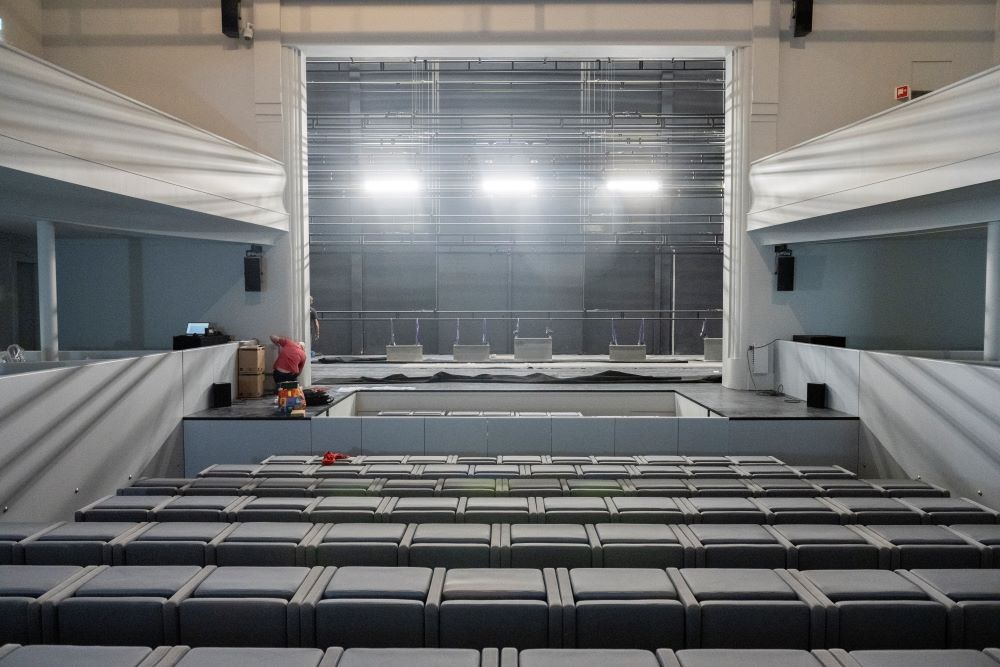
As a cultural facility, “Teatro Variedades will operate on a hosting basis, with the objective being, above all, to have shows running for up to six weeks, somewhat contradicting what has been happening in other institutions in the city”, announces Joaquim René, director of Variedades, and also the “neighbor” Capitólio. “We want companies that debuted their shows in a room, but only had a few days of performance, to be able to do a longer season here”, in a logic similar to that adopted, still under the direction of Tiago Rodrigues, by Teatro Nacional D. Maria II (TNDM II) with Teatro Maria Matos, currently managed by Força de Produção.
And, speaking of TNDM II, the year 2025 of Variedades will be marked by five productions from the theater currently directed by Pedro Penim. “Due to the delay in the works on the Rossio building, Nacional will be here, in February, with A Farsa de Inês Pereira. In the following months, Hamlet will be shown here, co-produced with Teatro São João do Porto; Marco Mendonça’s new project; and two other shows that we cannot announce yet.” As a curiosity, René remembers that the relationship between TNDM II and Variedades is not new: “when Nacional caught fire [1964], the Company [Rey Colaço-Robles Monteiro] was here.”
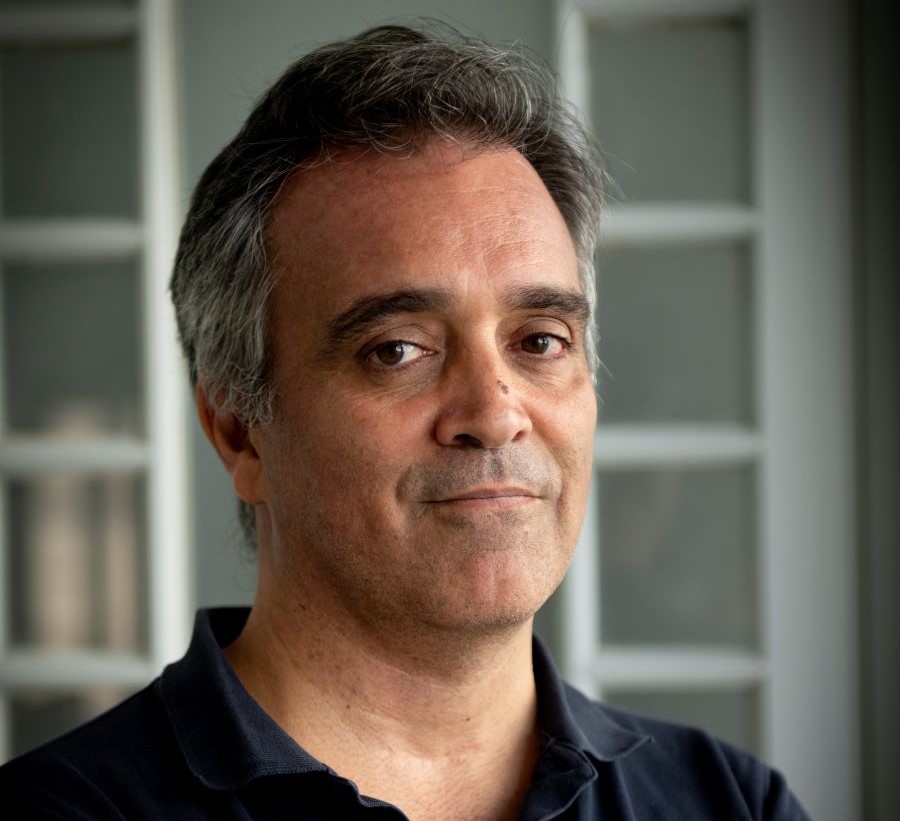
In addition to hosting, TNDM II will bring, next year, FIMFA festival and a production by Musical Theater Lisbon, the Lisbon Players and Companhia de Ópera do Castelo. In January, Três é a conta que Deus fez, a show that brings together three historical figures from Parque Mayer on stage: Florbela Queiroz, Natalina José and António Calvário. “It will be a very representative year of the heterogeneous programming that is intended for Variedades, in order to bring in diverse audiences, while at the same time seeking to honor the memory of Parque Mayer by simultaneously bringing it into contemporary times.”
Elétrico opening and Rita Ribeiro and Jon Fosse closing 2024
When on October 5, the renovated Variedades opens its doors again, Teatro do Elétrico and Ricardo Neves-Neves will have the honors of presenting the two inaugural shows, which will run simultaneously. “Opening a theater is a good feeling, but it’s also very scary. We are the ones who are going to test everything”, points out the playwright and director, just two weeks before the premiere of Entraria nesta sala and The Swimming Pool Party, two shows that are based on texts written a few years ago but never staged by Neves-Neves.

“
When [Lisbon Cultura] invited us, they had in mind a comedy or a musical. With the help of Sissi Martins and Ruben Madureira, I even looked for a musical piece that suited not only the size of the budget but also the size of the stage, but I couldn’t find it. That was when I remembered these two that I wrote a few years ago and never staged”, says Neves-Neves, highlighting the desire to present “two comedies with live music”, one of which, Entraria nesta sala, evokes the memory of Portuguese theater and four of its greatest personalities: António Silva, Beatriz Costa, Maria Matos and Vasco Santana.
After a month with Teatro do Elétrico – and, attention, with an exhibition in the theater’s foyer that brings together a collection of photographs of Parque Mayer by critic and filmmaker Lauro António –, in November there is the return of Rita Ribeiro to the stage and the Artistas Unidos in the city center, after the closure of Teatro da Politécnica.
On the 6th, premieres Rita, a show staged by João Ascenso, with text by Sandra José, where Rita Ribeiro, alone, revisits her life and five-decade career in theater and cinema. At the end of the month, Artistas Unidos returns to Jon Fosse, the Norwegian author awarded the Nobel Prize for Literature in 2023, with Vento Forte, a show that will begin in December and closes the first quarter of the new life of Teatro Variedades.
The directors and programmers of five film festivals, which take place in October in Lisbon, reveal the main news, guests and, of course, the films that everyone will want to see.
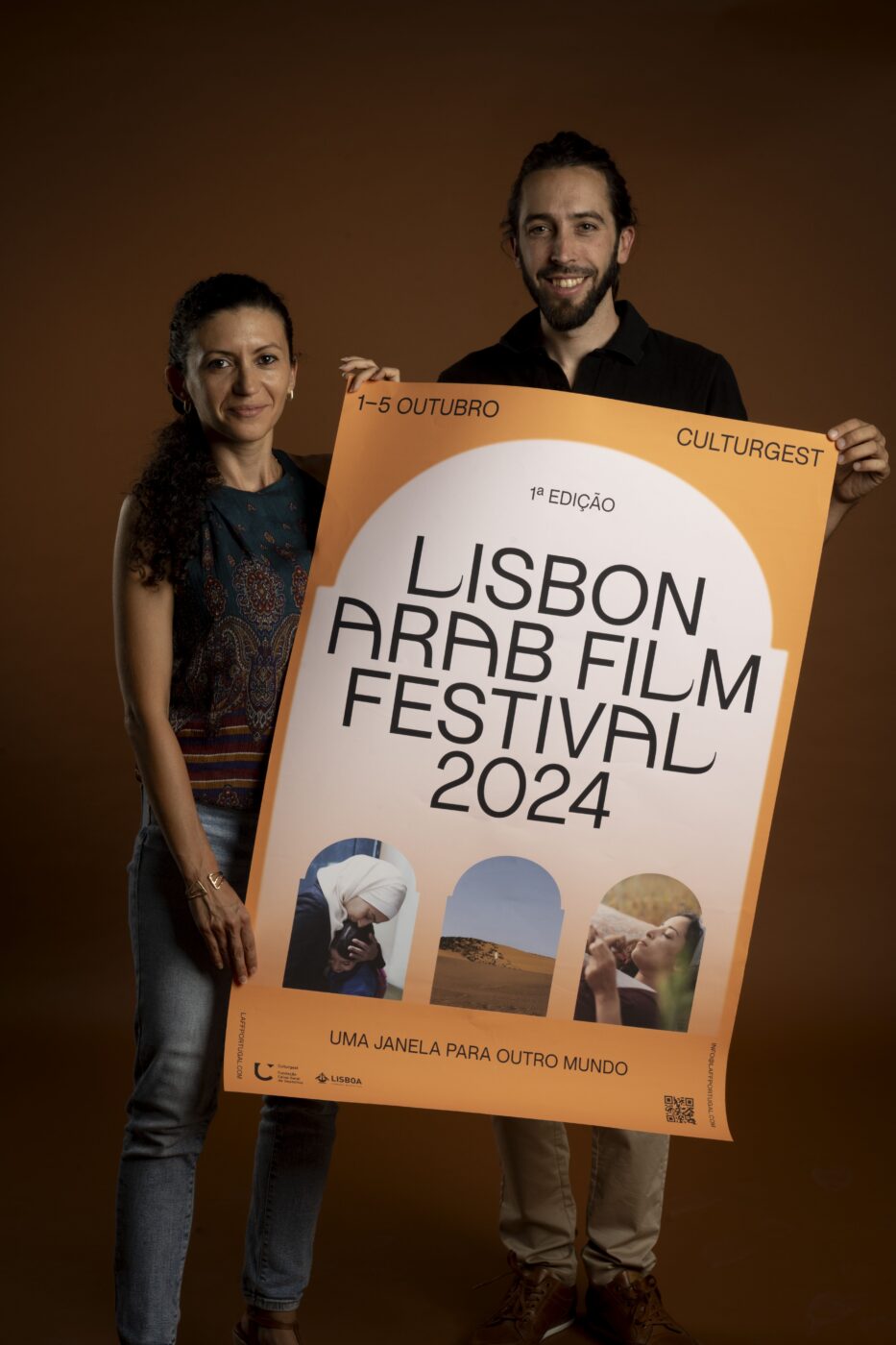
LAFF – Lisbon Arab Film Festival
October 1 to 5
When French-Tunisian Saoussen Khalifa arrived in Portugal five years ago, she noticed that “there were many similarities and influences from the Arab world in Portugal”, but “there was little awareness of these connections”. The need to showcase this intersection of cultures was the starting point for the Lisbon Arab Film Festival.
This first edition of the event seeks to promote dialogue between cultures and offer a vision of today’s Arab societies, contradicting stereotypical ideas. From the programme, João Gonçalves highlights the opening film, Everybody Loves Touda, by the French-Moroccan, Nabil Ayouch, who was present at the Cannes festival and was chosen as Morocco’s candidate for the Oscar
But there’s more: Bye bye Tiberias, by Lina Soualem, a documentary focused on Israel’s occupation of Palestine, and the closing session film, Inshallah a Boy, a drama by Amjad Al Rasheed, filmed in Jordan, are “unmissable”.
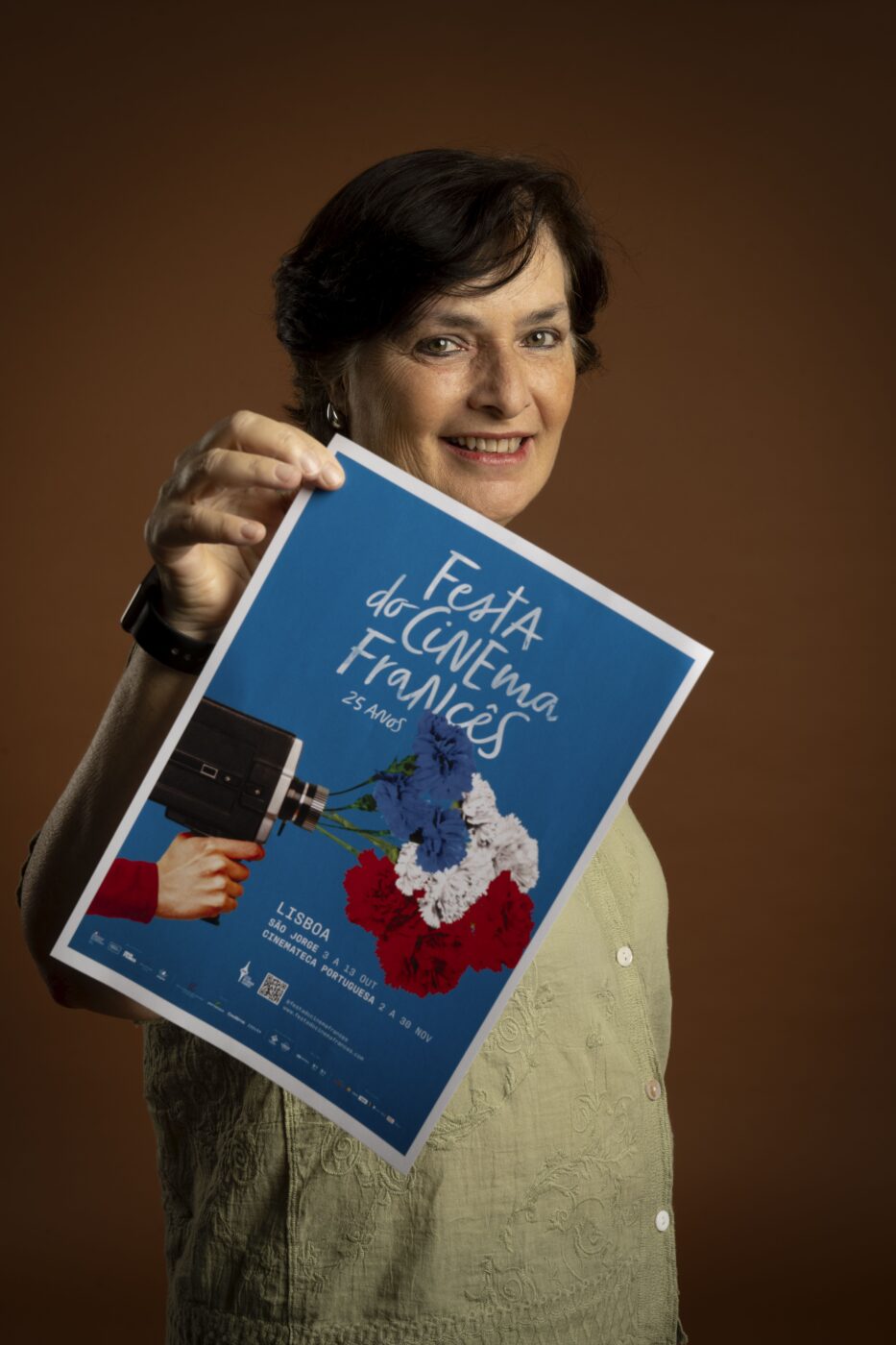 Kátia Adler (diretor)
Kátia Adler (diretor)
French Film Festival
October 3 to November 3
The French Film Festival celebrates 25 years. Kátia Adler states that “the Festival has a growing audience” and in this sense, this year for the first time, “there are five films in competition, all premieres, with the aim of achieving even greater participation of the public.”
From the vast programme, two new sections stand out: Rir à grande e à francesa, which presents comedy films, because as the festival director says “we need to laugh and go to the cinema”; and Uma Língua, Múltiplos Olhares, which exhibits works that result from Franco-Belgian co-productions. Kátia Adler also highlights a film that left a lasting impression on her for its cinematography: The Successor, by Xavier Legrand, a thriller that is surprising and “a pearl”.
In November, still within the scope of this edition of the Festival, Cinemateca Portuguesa presents a complete retrospective of the work of filmmaker Chris Marker (1921-2012).

Tribeca Festival Lisboa
October 18 and 19
“We want the festival to be a celebration of the best of pop culture and the crossroads between national and international talent. To achieve this, we will have great international films brought to Lisbon by the Tribeca Enterprises team, but also national productions, giving stage to our country’s storytellers and creatives.” This is how Mónica Serrano describes the purpose of the first edition of the Tribeca Festival Lisboa , a brand that was born in New York and is now arriving in Lisbon.
The programme also includes series, podcasts, musical performances and live chats with international and national stars. North Americans Whoopi Goldberg, Robert De Niro and Griffin Dunne, international star Daniela Ruah, and Portuguese Ricardo Araújo Pereira and César Mourão, are some of the personalities present at the event.
The films to be shown include award-winning works such as Anora (winner of the Palme d’Or at Cannes), Griffin in Summer, In the Summers and Bob Trevino Likes It, and Portuguese films such as Podia Ter Esperado Por agosto, Azul and O Afinador de Silêncios.
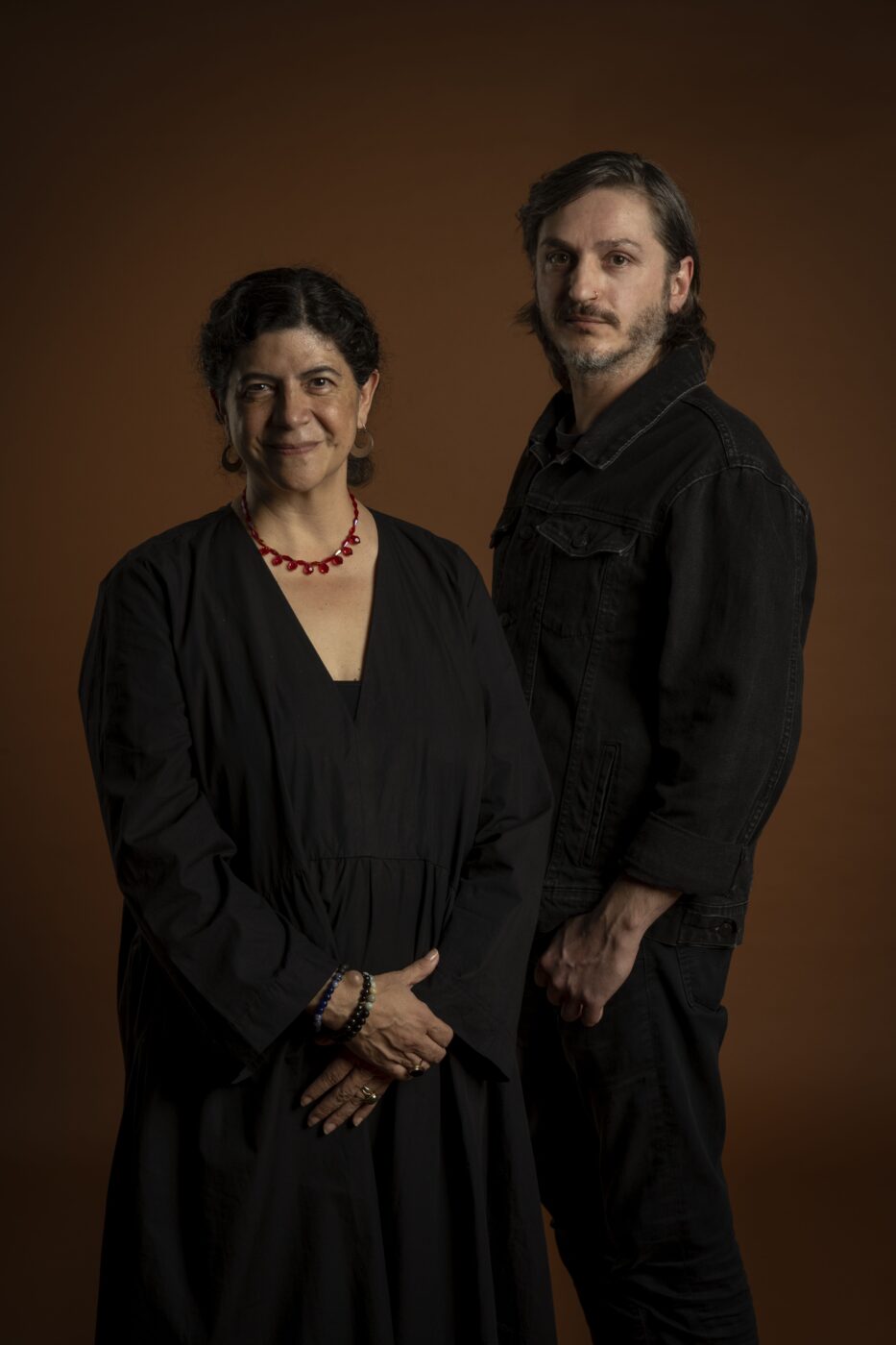
Doclisboa – Internacional Film Festival
October 17 to 27
The 22nd edition of Doclisboa, the first under the direction of Mexican producer Paula Astorga, presents a programme that promotes dialogue between present, past and future, allowing a series of reflections on current cinema. Being at the helm of Doc “is a great emotion and it was a gratifying surprise to direct a festival that is very well positioned internationally and is highly anticipated by Lisbon residents”, highlights Astorga.
From the programme, programmer Luca D’Introno highlights two retrospectives: one dedicated to Mexican filmmaker Paul Leduc (1942-2020), which opens with the film Reed: Insurgent Mexico, a unique gem discovered at Cinemateca Portuguesa; and another, curated by Jean-Pierre Rehm “which reflects on modernism thinking about the future, looking at the past”.
It is also worth highlighting the opening and closing films: Semper, the most recent work by Luciana Fina, and The Day I Met You, by Brazilian filmmaker André Novais Oliveira.
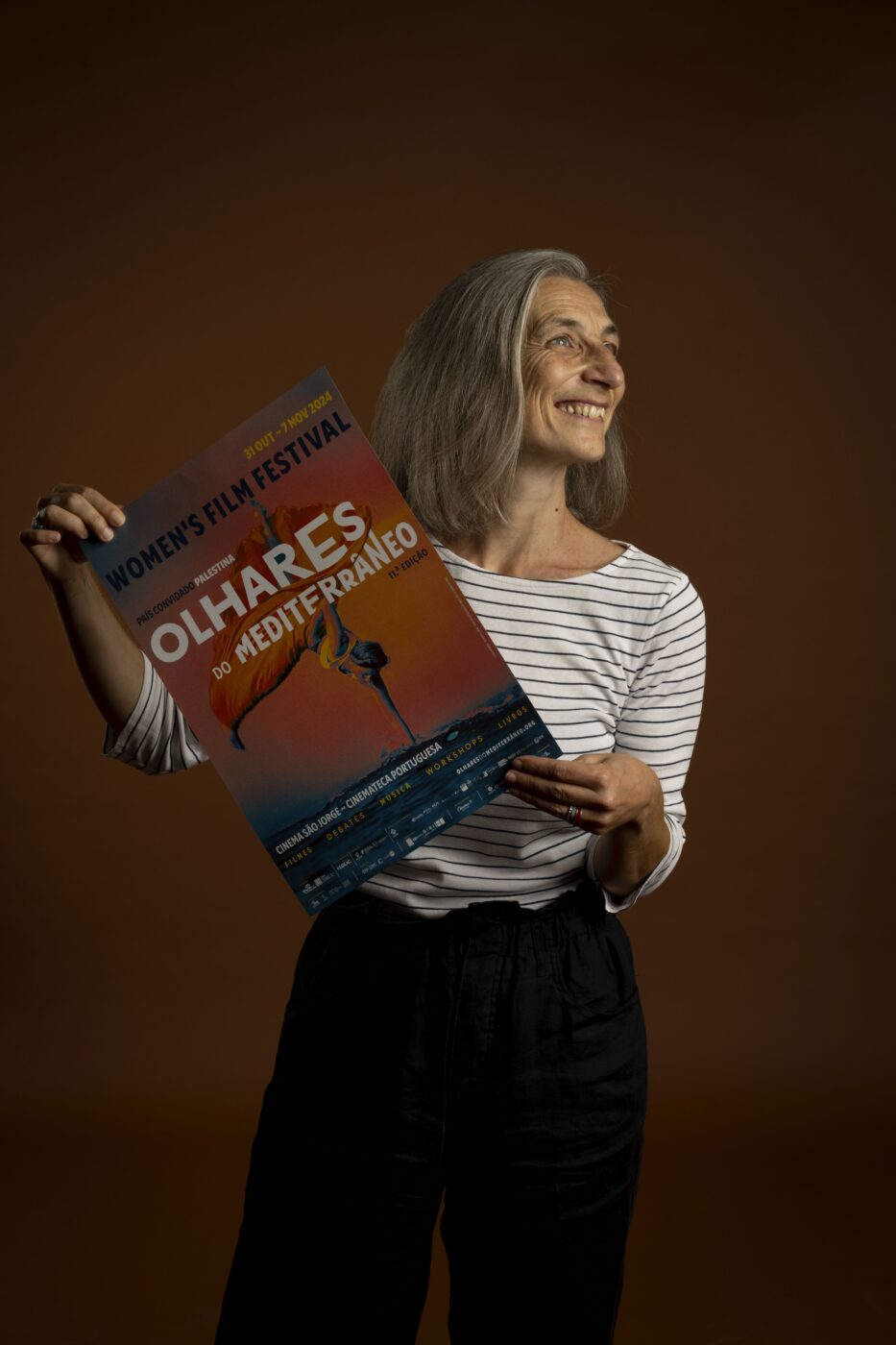
Olhares do Mediterrâneo – Women’s Film Festival
October 31 to November 7
Cinema made by women from Mediterranean countries is back in the 11th edition of Olhares do Mediterrâneo. This year’s theme, Revolution and Everyday Life, seeks, in the words of Silvia Di Marco, “to emphasize that the revolution is not an event closed in time, but that it continues and is renewed. On the one hand, because transformations are necessary, on the other, because no progress is guaranteed.” Demonstrating that, as Natália Correia would say, “culture is what transforms mentalities” is another idea that the festival promotes.
In this sense, the world premiere of A Mulher que Morreu de Pé, by Rosa Coutinho Cabral, stands out, precisely about Natália Correia, a woman who is an unavoidable figure in the fight for freedom. Also noteworthy is the guest country, Palestine, which is honored with a retrospective, at Cinemateca Portuguesa, dedicated to female directors from the Palestinian diaspora. Final note for the opening film, which serves as the theme for the retrospective: The Teacher, by the British-Palestinian, Farah Nabulsi.
For the (re)opening day, Gulbenkian prepared an extensive and varied programme that includes performances, conversations, workshops and five exhibitions. Some of these exhibitions open new spaces at CAM.
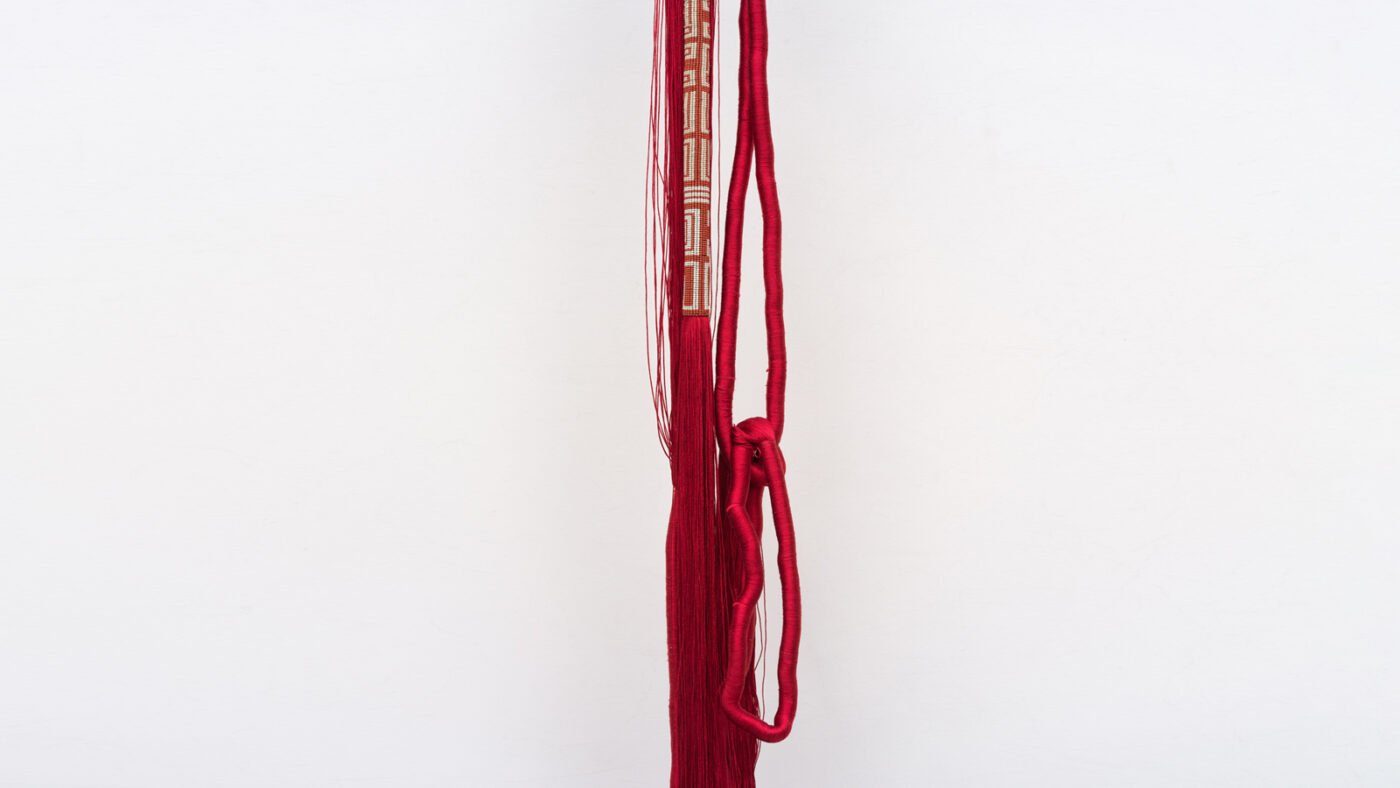
Leonor Antunes
Mezzanine e Nave/Sep 21 to Feb 17
Leonor Antunes takes to the main gallery the constant inequality of leonor’s days, an immersive installation that responds to the architectural specificity of the building. The exhibition, which has as its starting point an investigation into the works and trajectories of female artists, determining figures of the modernist movement made invisible by a history marked by inequalities, includes a wide selection of works by female artists from the CAM Collection.
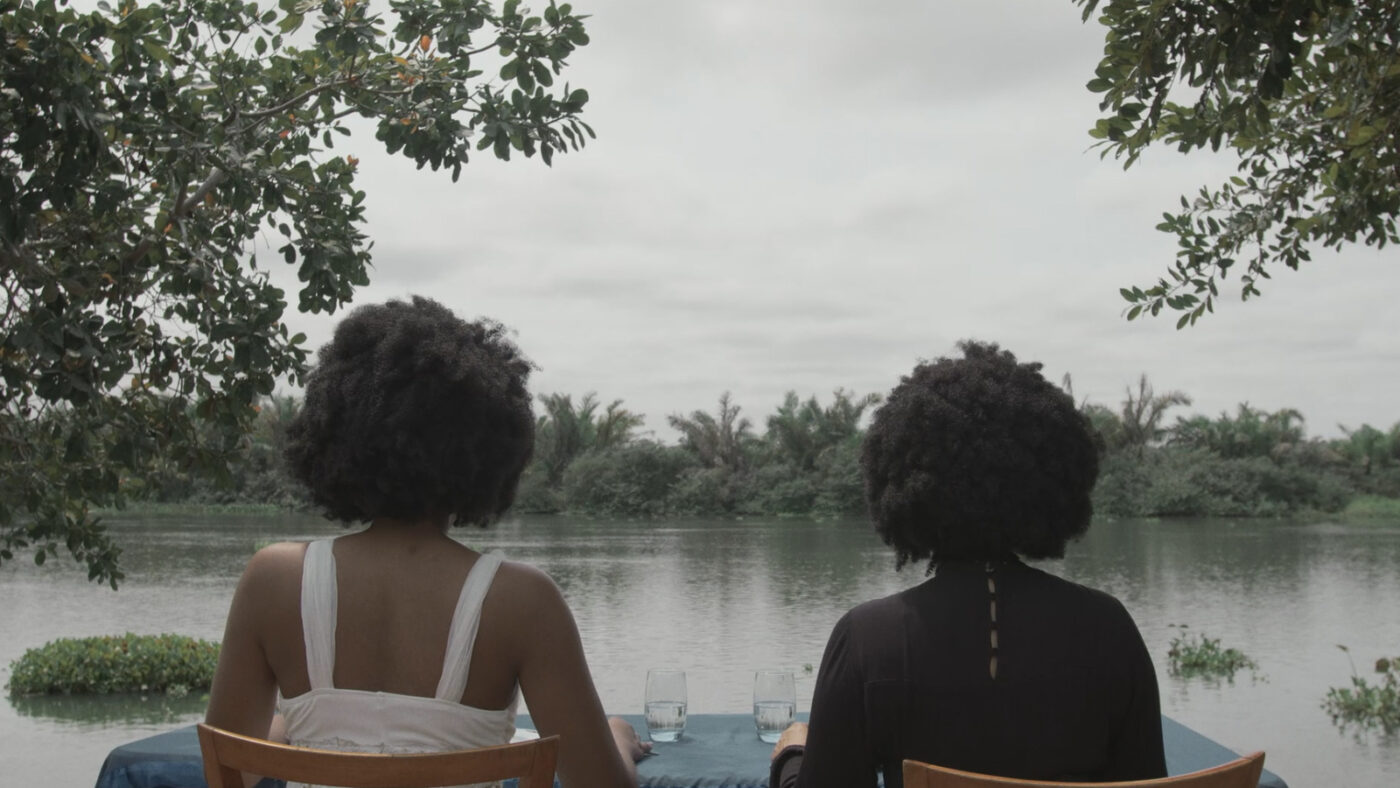
Tide Line. CAM Collection
Collection Gallery / Sep 21 to May 11
Tide Line starts from the Revolution of April 25 1974 to reach the present day, reflecting on the ongoing revolutions, most importantly those related to the state of the planet. Of the approximately 80 works on display, which includes paintings, drawings, film, video, photography, sculptures and installations, many are recent acquisitions never before shown at CAM, by artists such as Mónica de Miranda, Filipa César, Graça Pereira Coutinho, and Paulo Nozolino. The artist Gabriel Abrantes presents a new video work commissioned by CAM for this exhibition.
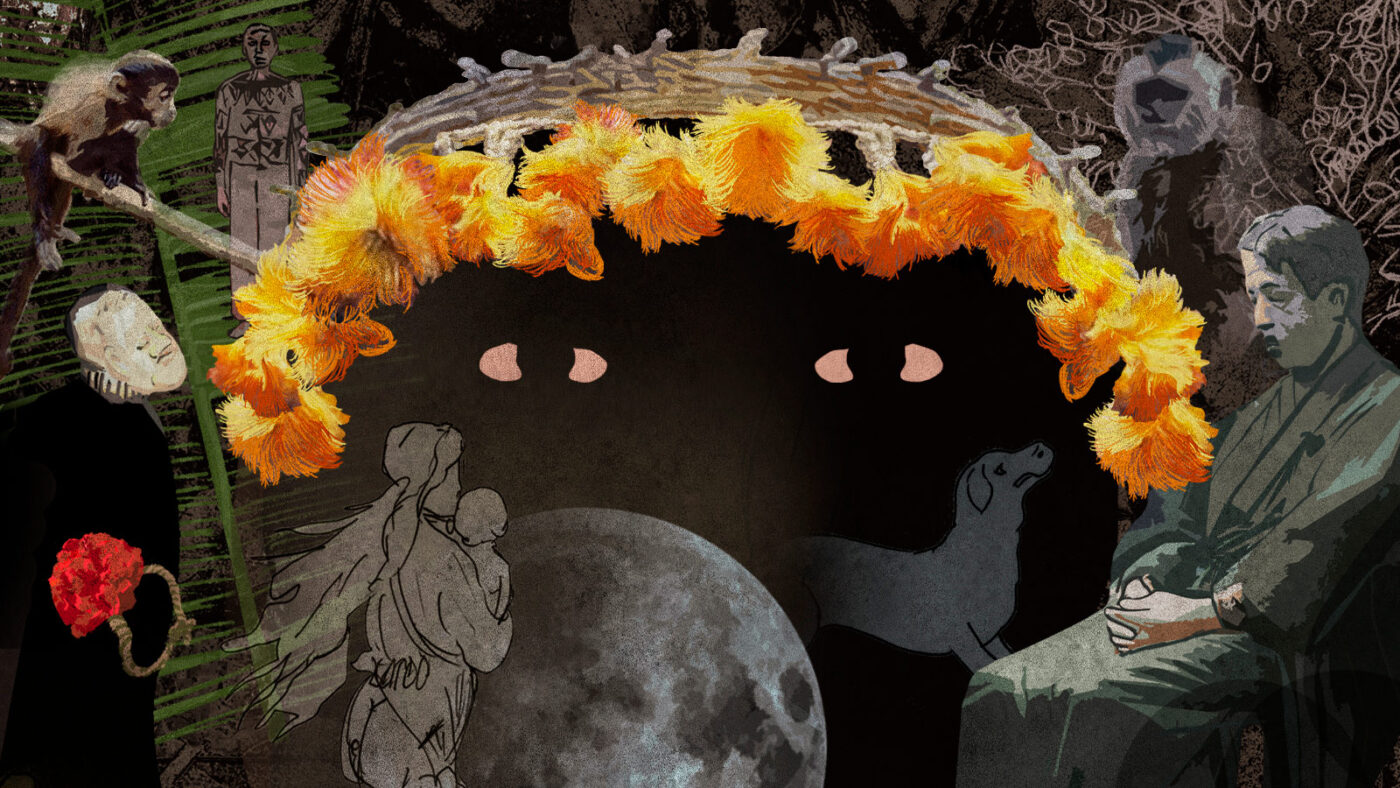
The Voice of Inconstant Savage, by Yasuhiro Morinaga
Sound Room / Sep 21 to Jan 13
The Sound Room receives a multifaceted, polyphonic and immersive sound installation by Yasuhiro Morinaga, that juxtaposes a recitation based on a Portuguese missionary report in the 16th century, a chant of the ‘Kakure-Kirishitan’s Oratio’, which is rooted in Nagasaki Prefecture, a singing of the Karawara spirits of the indigenous Awá people living in the Amazon rainforest, and a chorus of Western Gregorian chant.
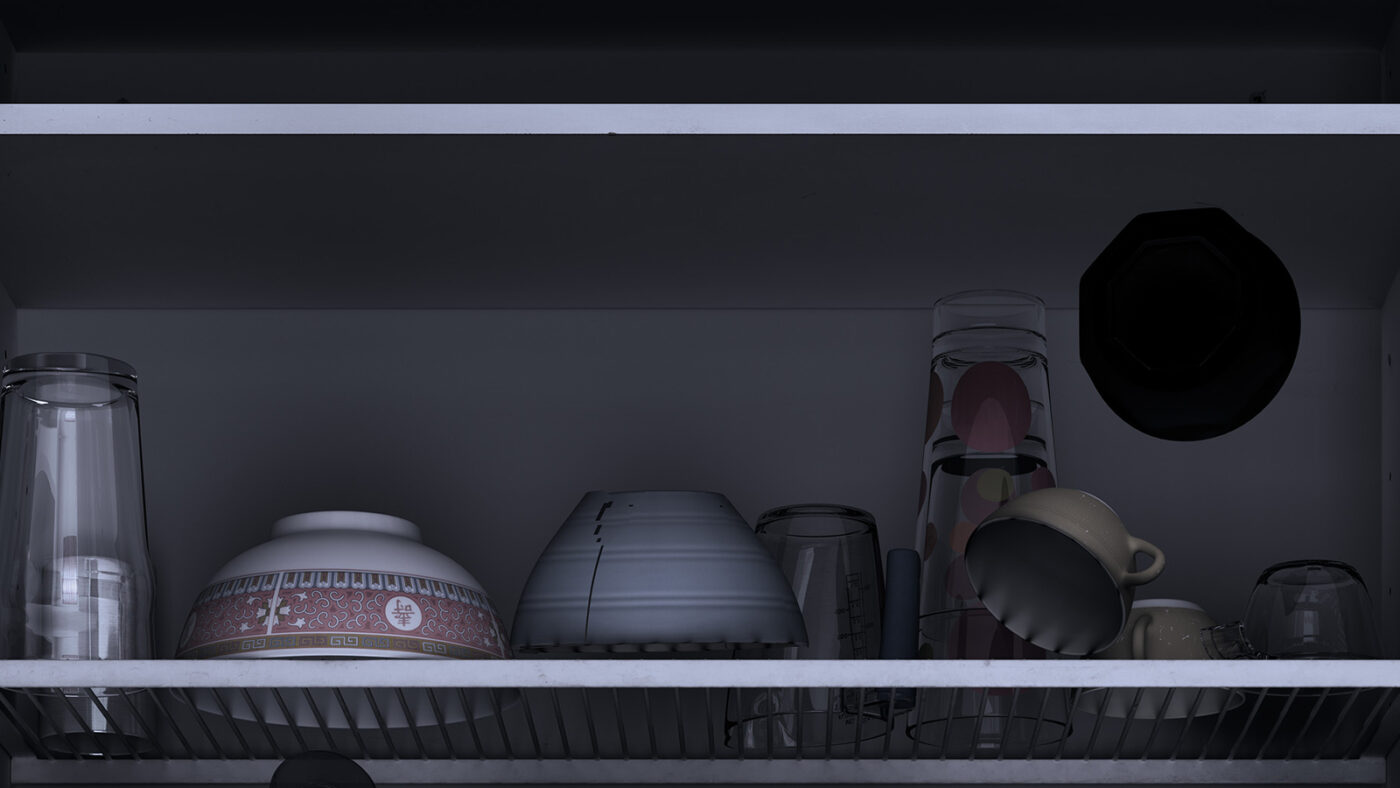
M5A5, by Go Watanabe
Project Space /Sep 21 to Nov 4
M5A5 is a site-specific installation presenting impactful large-scale video work, where four large projected images are carefully placed in the exhibition room, depicting a motif of tableware on shelves that slowly shift and collapse. plays with audience’s expectations regarding authenticity and deception. With M5A5 Go Watanabe raises questions concerning our perception of reality, through distorted 3DCG images of everyday objects, in an extreme slow motion sensory experience.
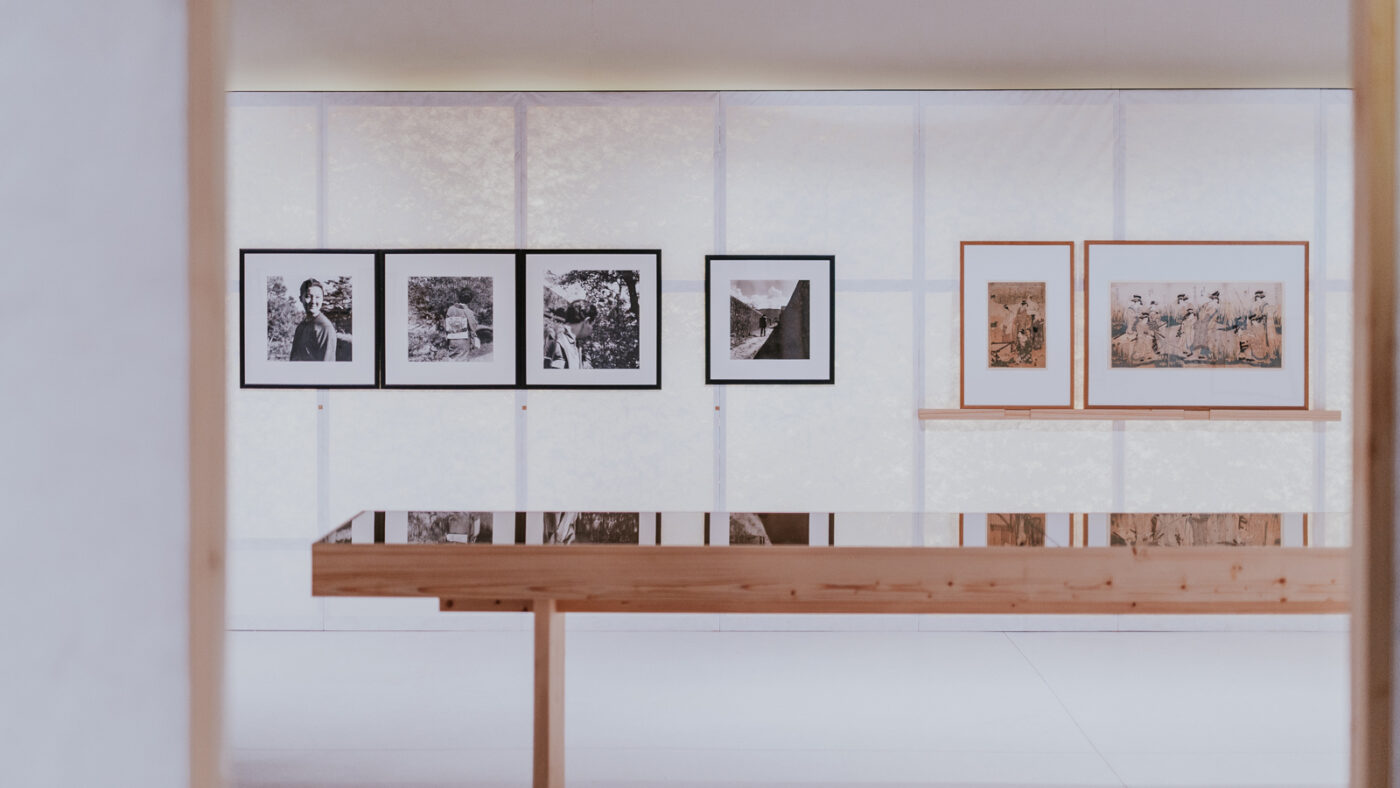
The Occidental Calligrapher. Fernando Lemos and Japan
Engawa Space /Sep 21 to Jan 20
In The Occidental Calligrapher. Fernando Lemos and Japan, the Portuguese-Brazilian multidisciplinary artist explores his relationship with the Land of the rising sun in the 1960’s. Many of the photographs on display were taken during Fernando Lemos’s stay in Japan, where he arrived for the first time on a Gulbenkian Foundation scholarship, and are testimony to the seminal influence of Japanese culture on his artistic practice. His drawings and photographs on display are presented alongside his works in other media, works by other artists from the CAM collection, and with Japanese prints from the Gulbenkian Museum collection.
A living legend of contemporary theater, the North American master Robert Wilson returns to Lisbon next year with PESSOA – Since I’ve Been Me, an evocation of the different atmospheres of the works and heteronyms of the Portuguese poet Fernando Pessoa, born very near Teatro São Luiz, in Largo de São Carlos.
Co-production between Lisbon’s municipal theater, the Florentine Teatro della Pergola and the Parisian Théâtre de la Ville, this “last rêverie” by Bob Wilson, as artistic director Miguel Loureiro calls it, has dramaturgy by Darryl Pinckney – Wilson’s regular collaborator, author of the magnificent Mary said what she said, a show that marked the 2019 edition of Almada Festival – and features an international cast including actress Maria de Medeiros. These ingredients make PESSOA – Since I’ve Been Me one of the most anticipated shows of the next season and, since there are only two performances (March 7th and 8th), judging by Wilson’s theater’s previous visits to Portugal, tickets tend to sell out fast.
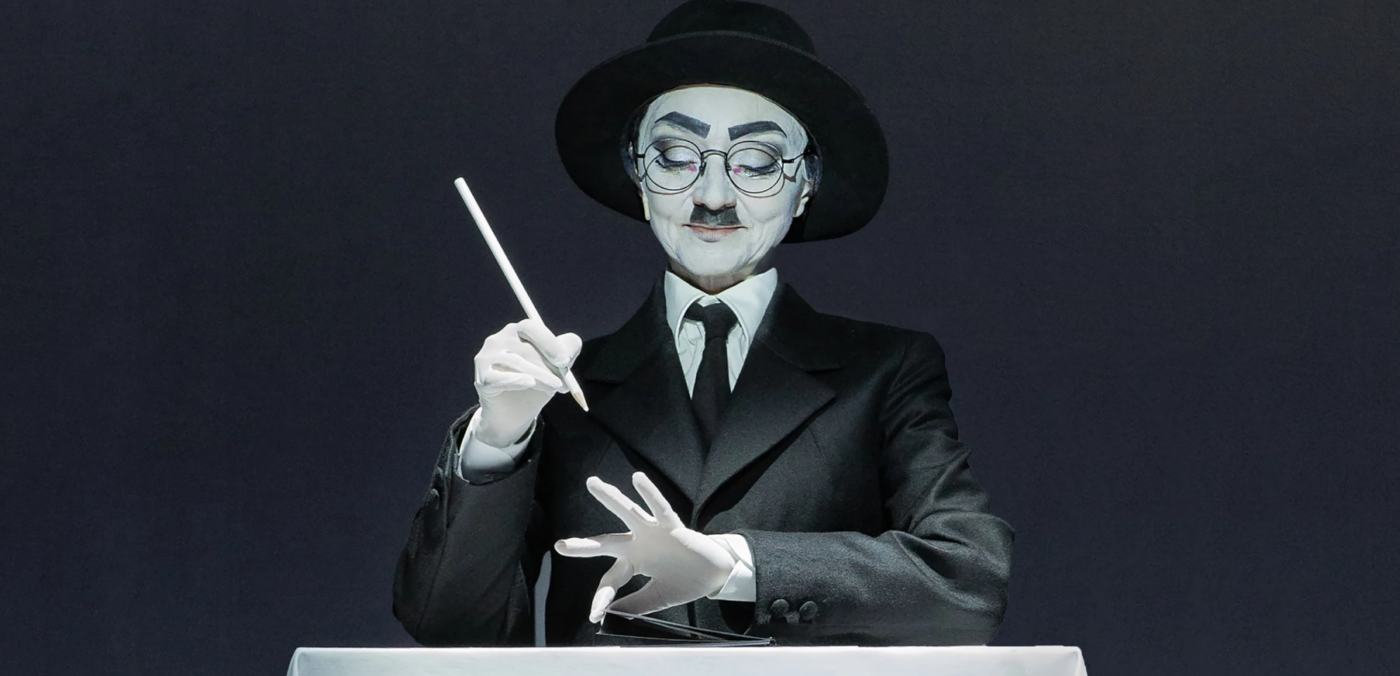
However, São Luiz’s season is far from being limited to this event. There are many theater proposals that the 2024/2025 season lists, starting in September, when Ivo Alexandre presents his vision of Amedée ou Como Desembaraçar-se (from 20 to 29), a landmark in the theater of the absurd authored by the French-Romanian playwrighter, Eugène Ionesco.
The great authors are, in fact, highlighted, with Arthur Miller and As Bruxas de Salem, directed by Nuno Cardoso (December 13 to 15 ); Shakespeare by Miguel Moreira and Útero, with Hamlet – L’ Ange du Bizarre (December 19 to 22); Nathalie Sarraute and the plays Por tudo e por nada and Aqui está ela staged by Carla Bolito, in a show entitled Tudo A Que Se Chama Nada (11 to 26 January); Heiner Müller and Macbeth, according to Paulo Castro, Portuguese director residing in Australia back in Lisbon (February 14 to 23); or Heinrich Von Kleist by Maria Duarte, in a creation without a definitive title (March 22 to 30). Closing the season, Jean Paul Bucchieri brings Livro XI das Confissões de Santo Agostinho to the stage, with Bárbara Branco, Cláudio da Silva, Maria Arriaga and Pedro Lacerda in the cast (June 28 to July 5); and Renata Portas stages Seneca’s version of The Trojan Women (July 10 to 13).
Still in the field of theater, Teresa Sobral directs Class Enemy, a play from the late 1970s by British Nigel Williams (October 12 to 27); Cucha Carvalheiro celebrates the 30th anniversary of Escola de Mulheres with the staging of a new piece by Ana Lázaro entitled Deseja-se Fernanda!, dedicated to the founder of that company, Fernanda Lapa (March 15 to 23); and Assédio, a company from Porto, presents a reflection on the colonial war, with A Tragédia de Aristides Inhassoro, by Pedro Galiza (April 24 to 27). The programme also includes creations by Hotel Europa (Urgência Climática), Raquel André (Belonging / E di / Pertenencia / Zugehörigkeit / Pertença / 絆), Os Possessos (Last Call), Lígia Soares (Romance), Marco Paiva (A Tempo) e Miguel Graça (Killer Joe). The Alkantara and FIMFA Lx festivals will take place on São Luiz stages, as usual.
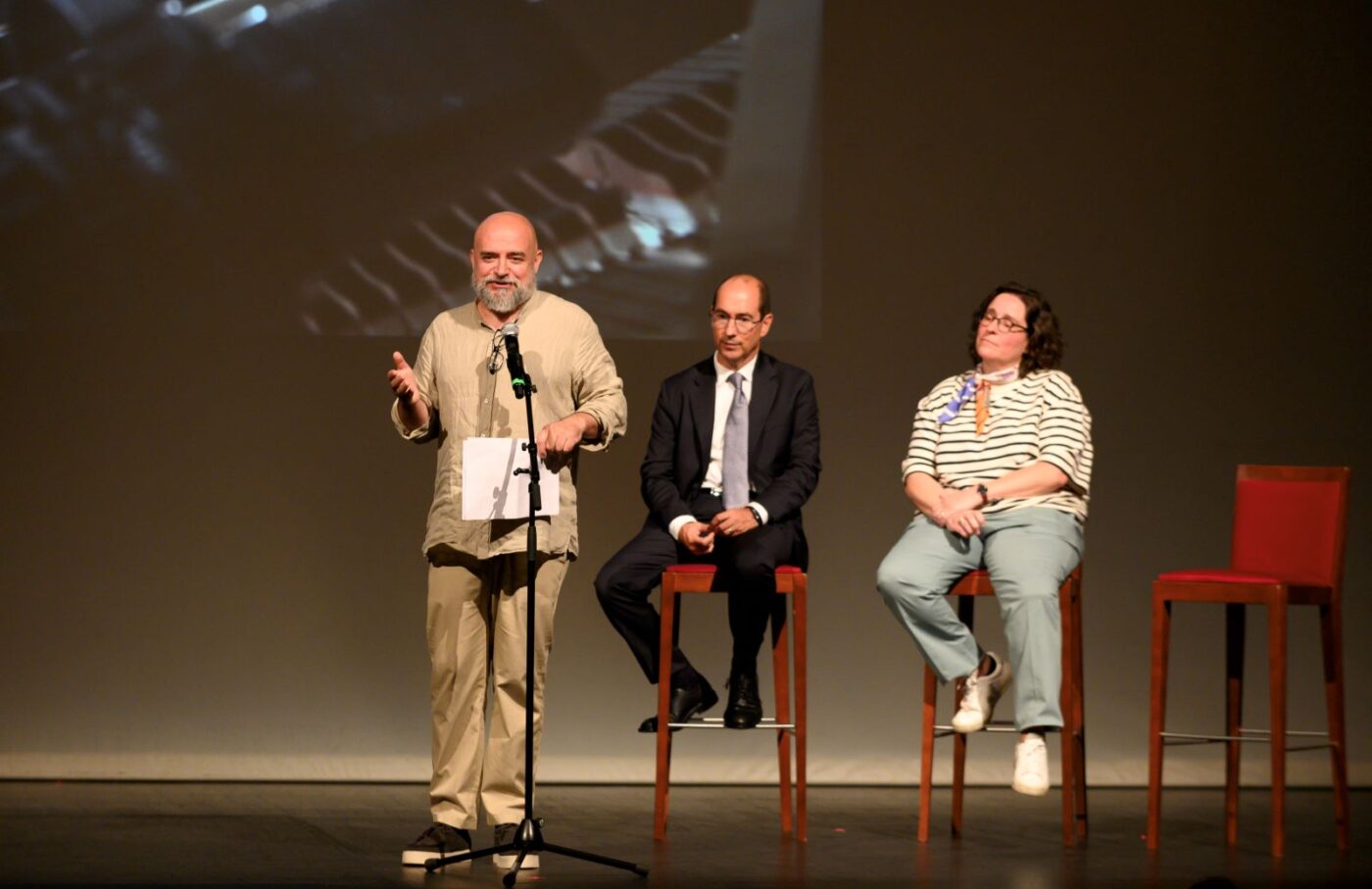
Dance and performance are also very important. For the season, Miguel Loureiro begins, in September, to focus on a double programme with two shows by the collective Dançando com a Diferença – Blasons, by François Chaignaud, premiered in 2022, and Doesdicon, created by Tânia Carvalho in 2017 (19 to 21); and, again, Tânia Carvalho, but this time alongside Matthieu Ehrlacher, in the project that the duo has been developing since 2021, Papillons d’éternité, with the play Nymphalis Antiopa, created and performed by both.
In the coming months, marking the city’s cultural agenda are Rui Horta (the choreographer signs Glimmer with Micro Audio Waves, a musical, performance and multimedia show, with the participation of Gaya de Medeiros), Catarina Miranda (Atsumori), Vânia Rovisco (No Corpo: Assim se Conhece o Mundo), Filipa Francisco and Bruno Cochat (NU MEIO and NU MEIO Comvida, with participations by Félix Lozano, Sónia Batista, Margarida Mestre, Miguel Pereira and Carlota Lagido), Circolando (OU) and Olga Roriz (O Salvado). In performance, highlights include Ritó Natálio, with Spillovers, from Lesbian peoples: material for a dictionary, by Monique Wittig and Sande Zeig; the return of Romain Beltrão Teule, with Dobra; and e(u)co(m)lógica by José Laginha, a creation for young people that combines the climate crisis with the functioning of the human brain.
A Place for Music
From the first minute as artistic director of Teatro São Luiz, Miguel Loureiro made a strong commitment to music programming. The upcoming season places the municipal theater at the epicenter of the offer, and music in parity with the performing arts. An obvious sign is that the season opens “with two concerts in a different format” by Júlio Resende. The talented pianist presents, on September 13th, Fado Jazz – Filhos da Revolução, and the following night, alongside ALMO (tenor Paulo Lapa and baritone Tiago Matos), a surprising journey through fado and the Portuguese Songbook. This weekend, on the night of Friday the 13, musician, choreographer, dancer and DJ Faizal Mostrixx, pioneer of tribal electronics, is “master of ceremonies” at the opening party of the season.
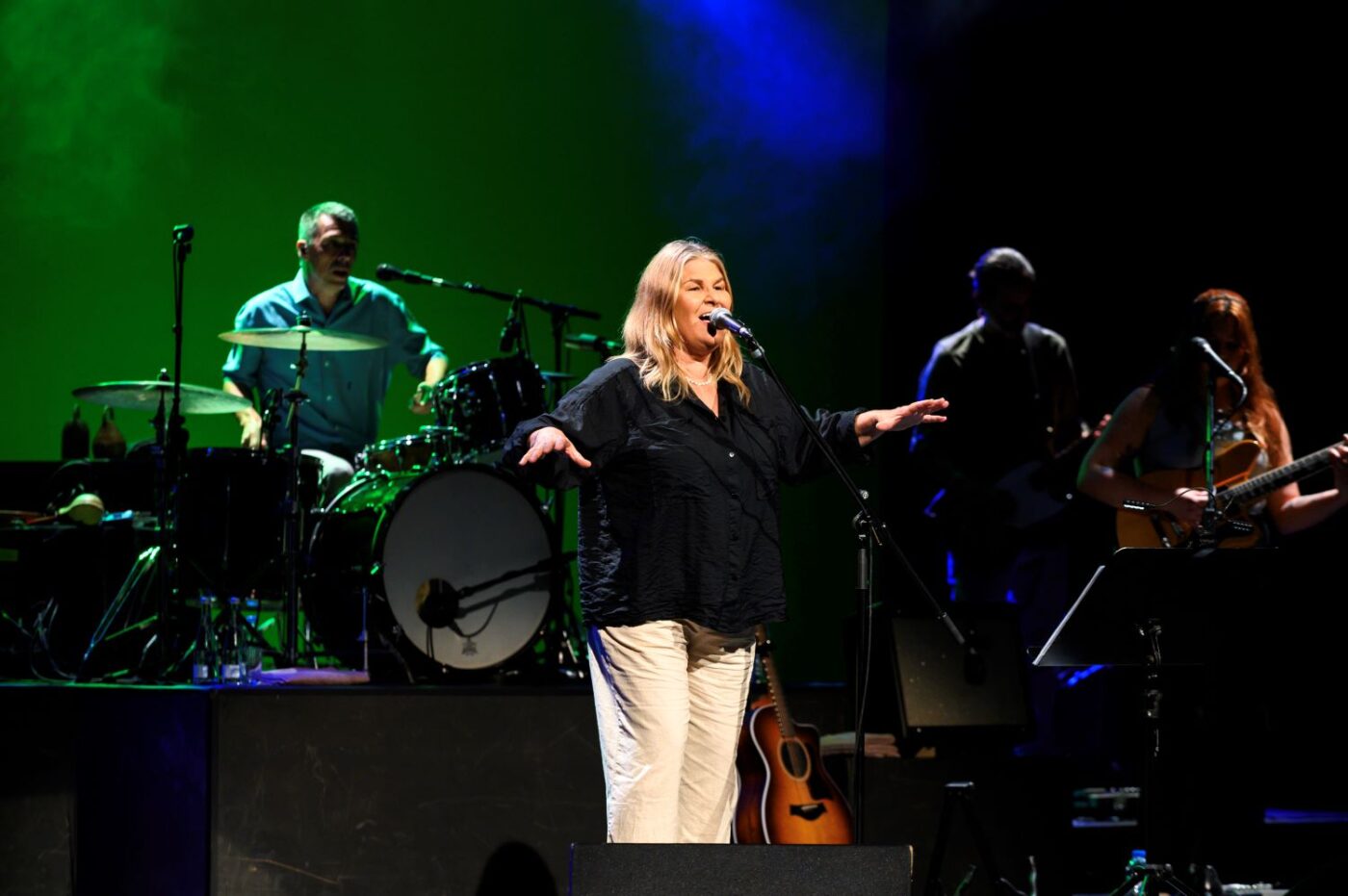
Until the end of the year there are many shows scheduled like MirAnda (September 24), Samuel Úria (October 8), Rafael Riqueni (October 11), Maria João & André Mehmari (November 8), Tony Ann (November 9), Rocío Márquez & Bronquio (November 10), Lena d’Água (November 12), Sara Correia (November 25), LINA_ (November 27), Cara de Espelho (November 29), Cristina White (December 5) and Kavita Shah (December 20). Besides a great concert commemorating the centenary of Amílcar Cabral (November 6) and the last two moments of Foco Maestro cycle with Martim Sousa Tavares (in December), World Music Day (October 1) is celebrated with the show Cantexto, dedicated to Alentejo singing, with the presence of eight groups of singers.
With the closure of São Carlos National Theater for improvement works, São Luiz hosts some of the shows included in the neighboring theater’s programming, namely in the area of chamber music and opera.
In 2025, the three rooms of São Luiz will welcome Pedro Jóia, Orquestra Metropolitana de Lisboa, Kolme, Nuno Vieira de Almeida (with Rita Blanco), Orquestra do Hot Clube Portugal or Nuno Côrte-Real.
The season also has an extended offer in the field of thought and science, with emphasis on another edition of the cycle O Nosso Futuro Ainda Humano, which opens on September 17 with the Basque philosopher and essayist Daniel Innerarity.
In the field of literature, it is worth highlighting the staged reading of O Mundo Começou às 5 e 47 to mark Luiz Francisco Rebello’s 100th birthday. On September 15, from 4 pm, with Marques d’ Arede, Ivo Alexandre, Marco Mendonça, Álvaro Correia, Cátia Nunes, Diogo Fernandes and Márcia Cardoso, directed by Miguel Sopas.
In November, a sound installation marks the 30th anniversary of Galeria Zé dos Bois and, in 2025, the collective Filho Único proposes a special programme for three days. This, in detail, and everything else, can be consulted on the official website of São Luiz Teatro Municipal.
The requalification project aimed to provide the building with the necessary functional requirements to allow the museum to fully function and, for this reason, it was developed in close coordination between design, museology, architecture and specialty projects. The MUDE building thus returns to being the cultural hub dedicated to all expressions of design, in the historic center of Lisbon, with areas for exhibition, creation, education, study, debate and leisure, meeting, conversation and sharing.
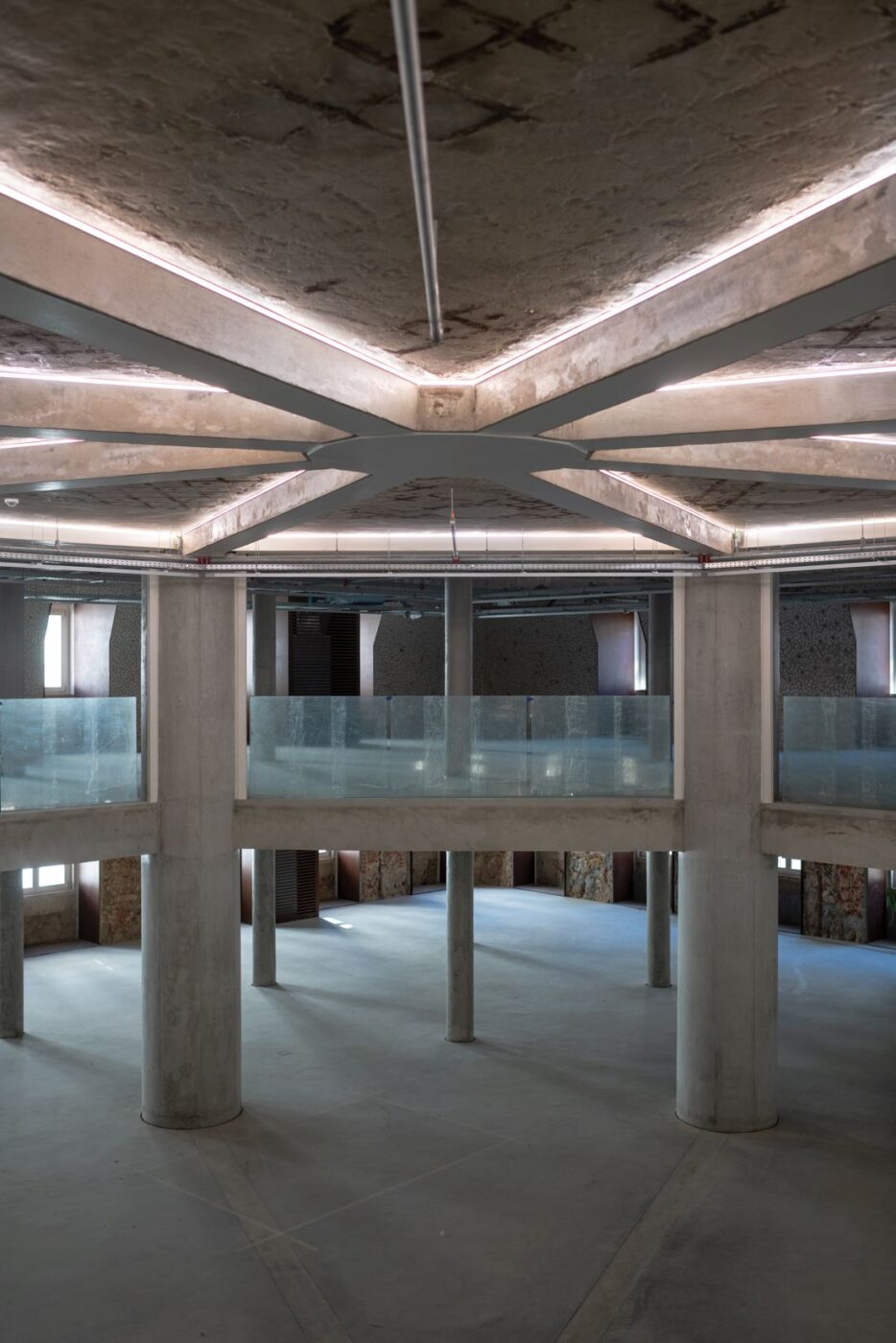
The Exhibitions galleries will occupy the 1st, 2nd, 3rd and 4th floors in open spaces, without partitions or coverings, substantiating the concept of the exhibition as an “open work”, defended for MUDE since 2009. In each new exhibition, the interiors will be changed and experienced in different ways. Between floors 3 and 4, a visual connection was created in the octagon area. MUDE, in this place, will be experienced as a prismatic point of opening and convergence between the observer and the entire museum.
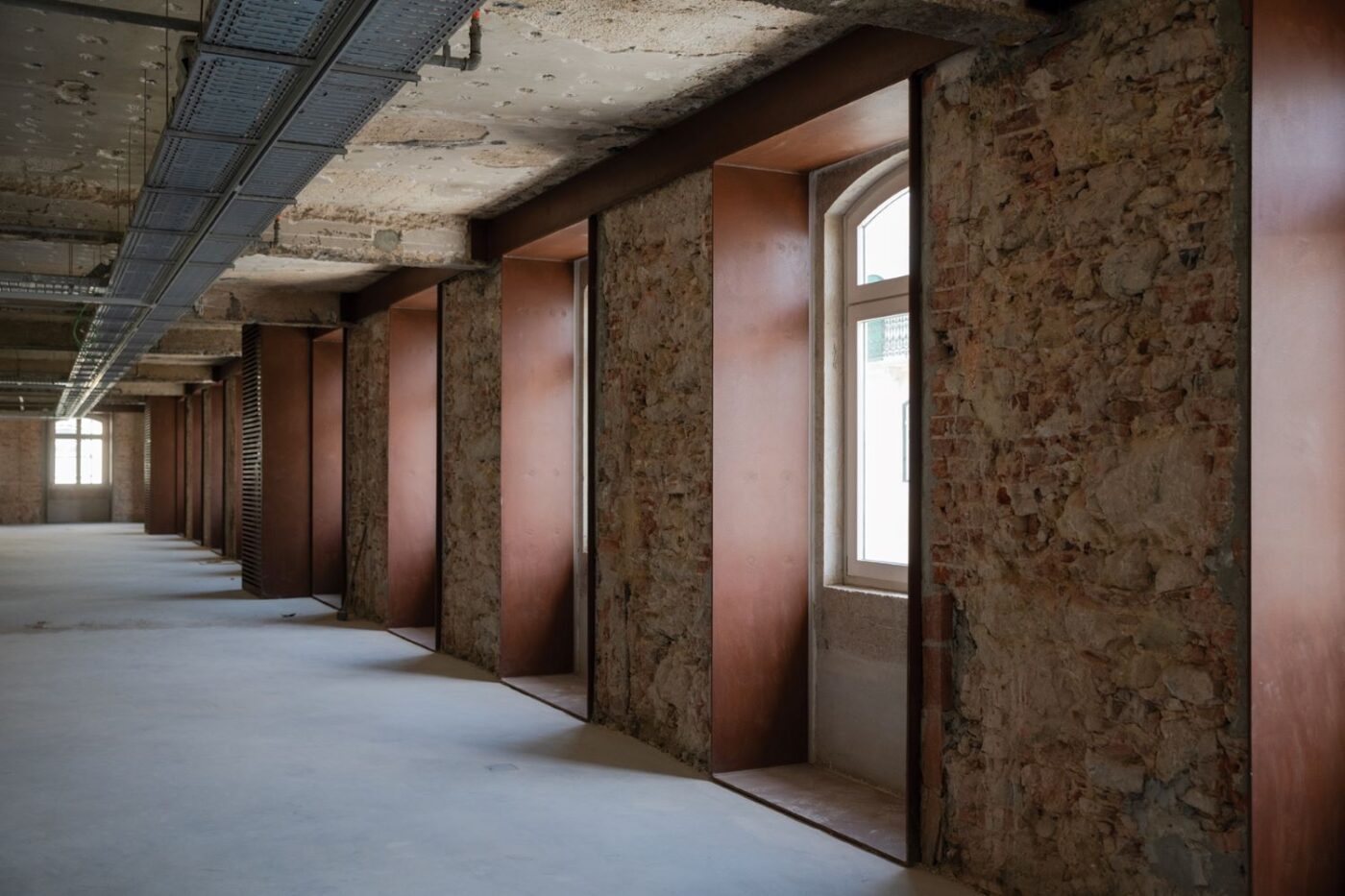
In this requalification of the building, the structural reinforcement solution that ensures its anti-seismic capacity stands out. This process enabled the valorization of pre-existing materials (in particular, brick, concrete and stone) and the different construction techniques applied over time in this location, contributing to the museological intention of transforming the building into a living testimony of design, architecture and engineering.
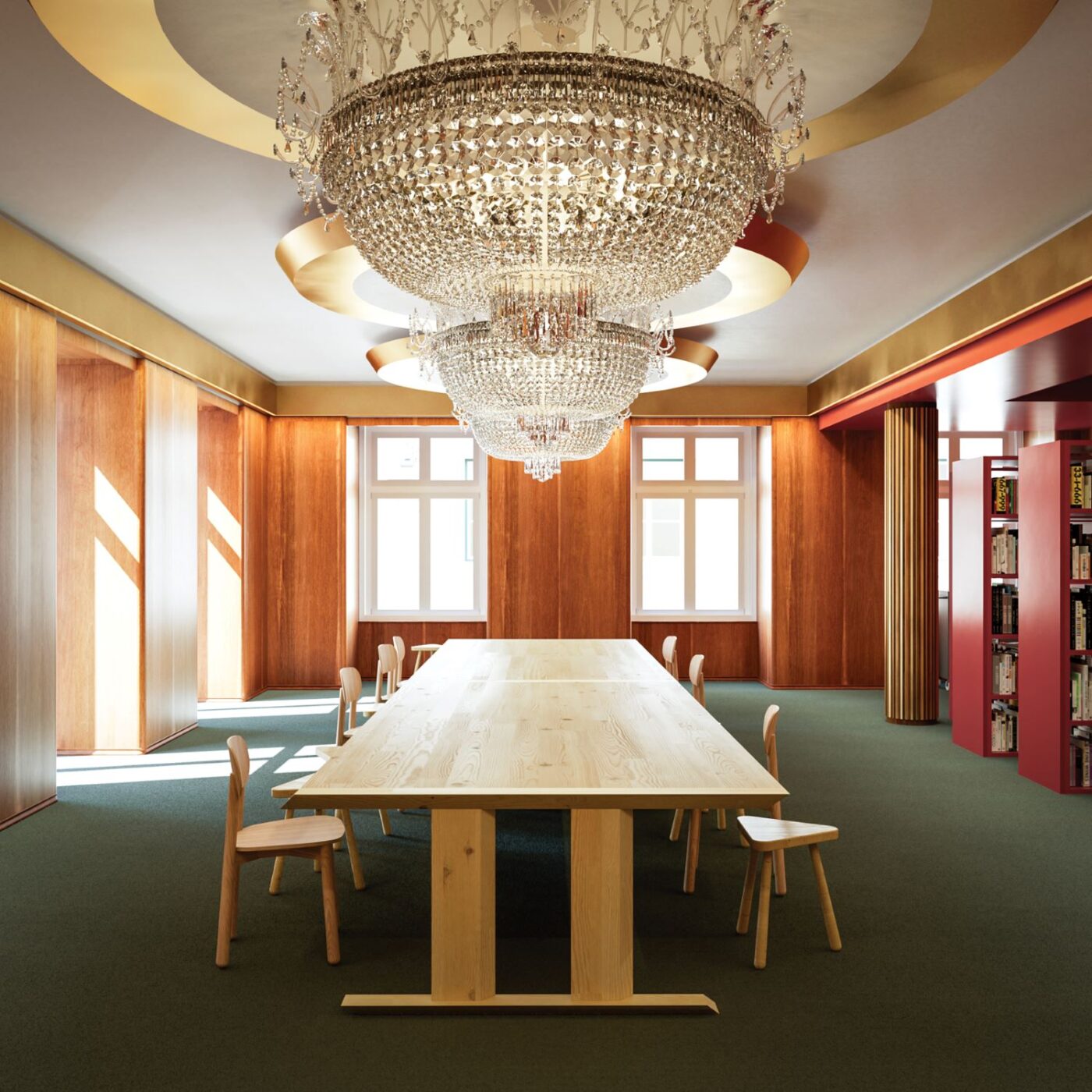
One of the new spaces to be opened to the public is the Design Library, expanded over the last 10 years, and which is part of the MUDE Documentation and Information Center. In terms of furniture, this space follows the general philosophy of privileging local natural raw materials and national production, reinterpreting models that reflect Portuguese know-how and material culture and, above all, guarantee an economy of means, resources and manufacturing techniques, avoiding excess and waste.
paginations here